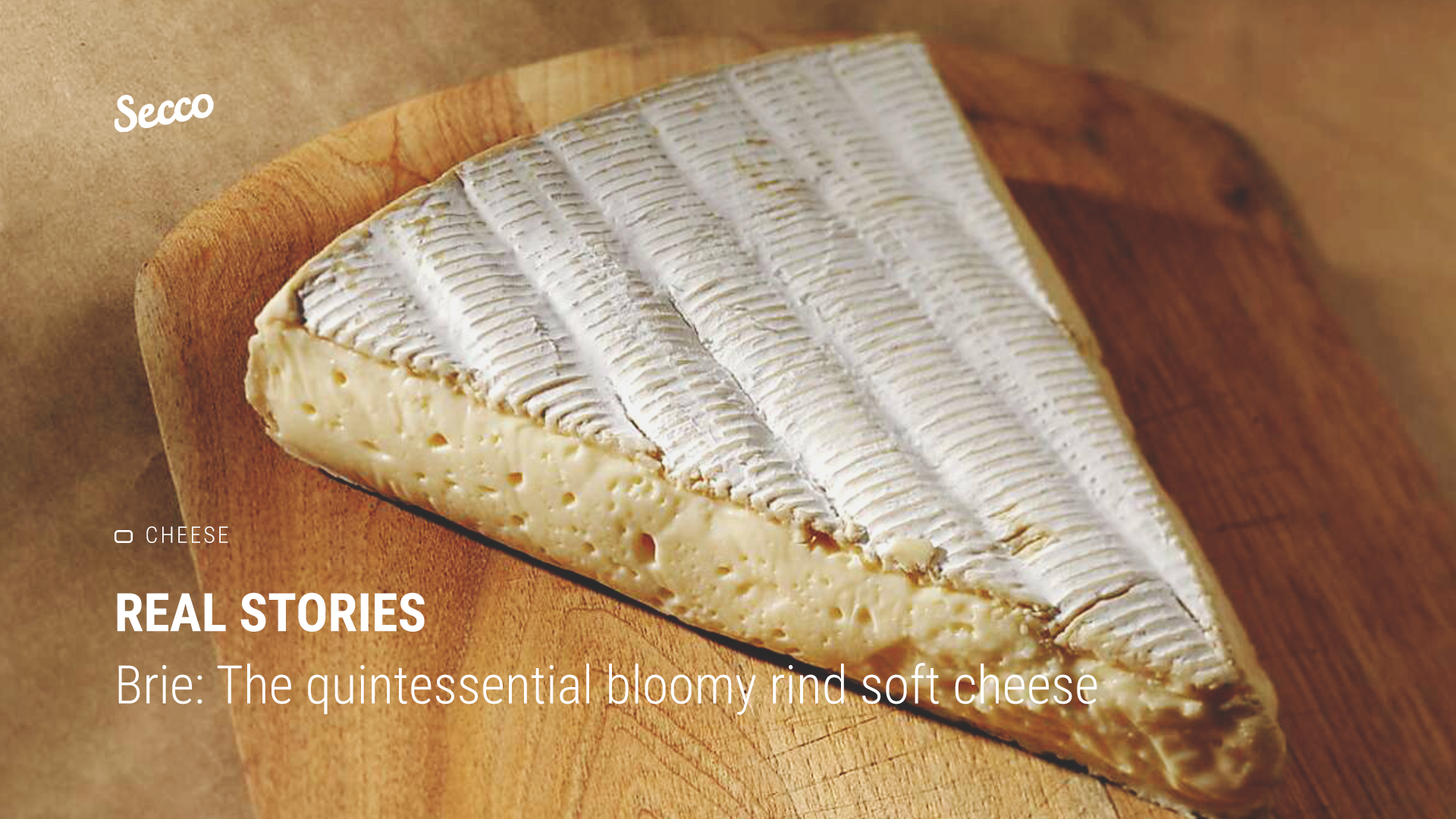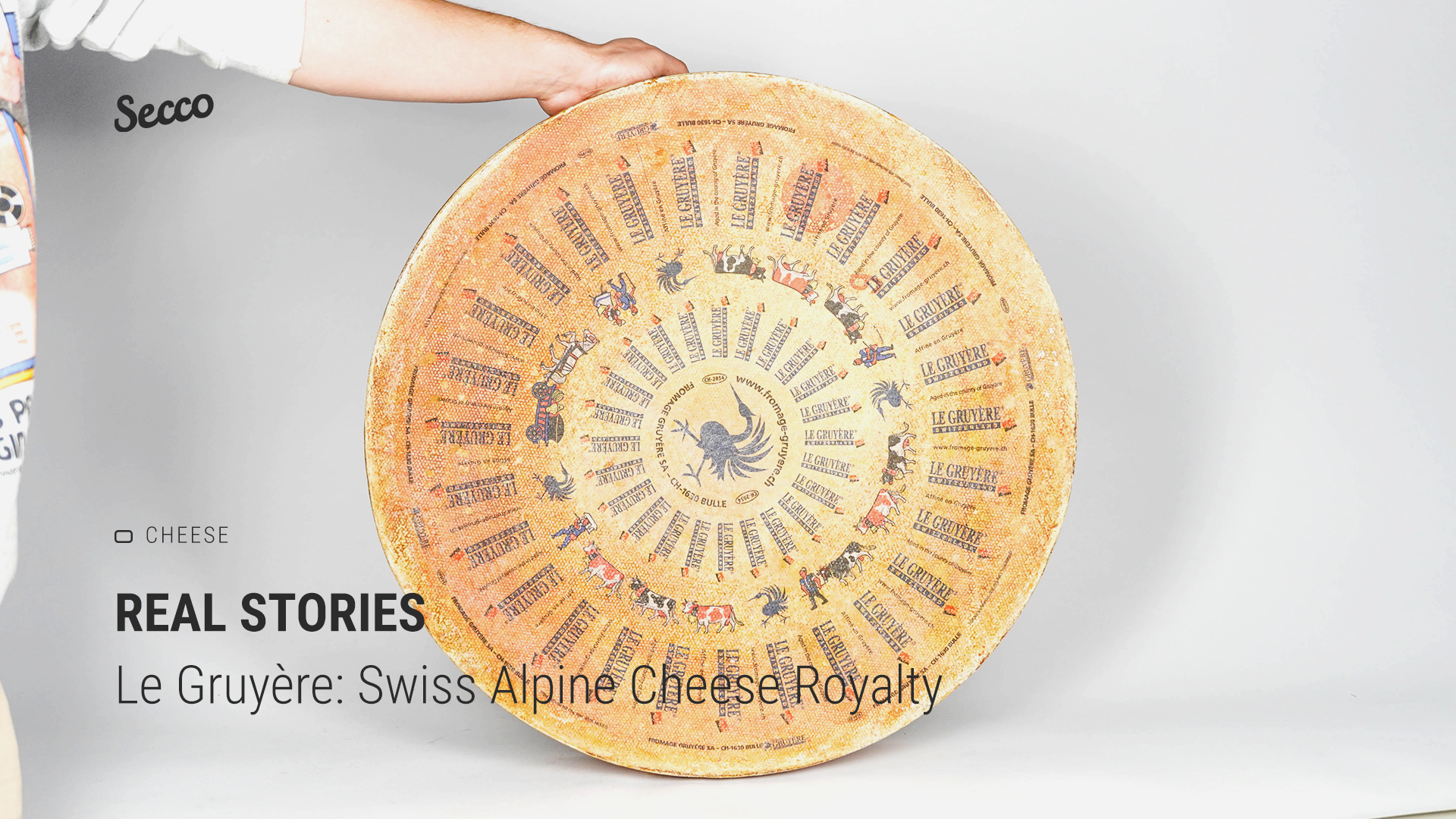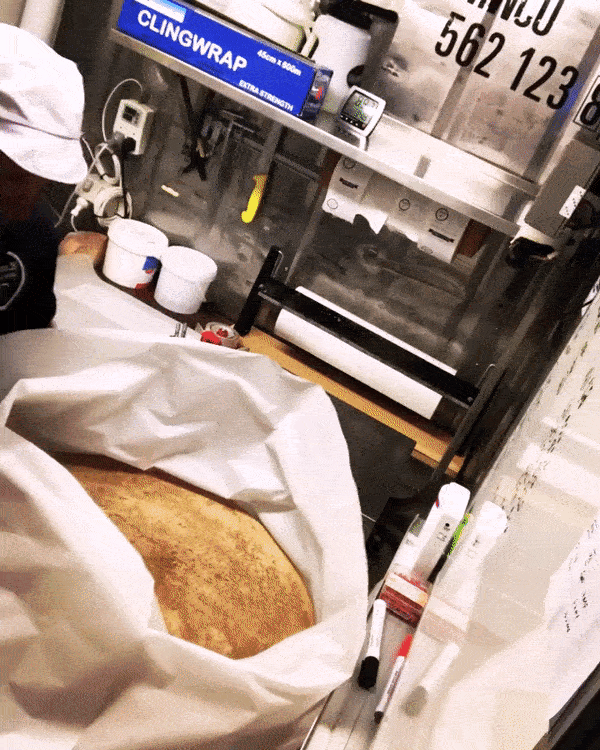World’s oldest Balsamic Vinegar producer Giusti joins Secco as flagship offering
Secco Fine Foods is pleased to announce our partnership with Acetaia Giusti and their range of historical, artisan Balsamic Vinegars of Modena for the South Australian market exclusively.
It is an honour to associate ourselves with the oldest, most historical producer of Balsamic Vinegar in the world and we thank the Giusti family for their belief in Secco’s customer-first values and our stable of aligned brands. We love to surround ourselves with aspirational businesses and to represent such an enduring, successful, yet still artisanal company is hugely significant for Secco.
Having started their operations in 1605 and now run by 17th generation Claudio Giusti and his family, Acetaia Giusti boasts a remarkable legacy of quality. These are not your garden variety vinegars, they are hand made using superior local grapes, long ageing and no sugar, caramel, or artificial additives. Indeed there are many parallels between these vinegars and the world’s finest wines.
Secco will be offering the five important vinegars from Giusti’s ‘Historical Collection’ up to 18 years of barrel age, as well as the traditional Balsamic Vinegar of Modena DOP, the white balsamic condiment and a special truffle balsamic. We also have access to Giusti’s range of infused vinegars and ornamental bottles which we will look to offer seasonally in future.
We are looking forward to a long partnership with Acetaia Giusti, and the opportunity to share these special vinegars with our customers. Should the range be of interest for your venue or store, please contact us to arrange an appointment.
Christian Canala
Founder, Secco Fine Foods
Secco Fine Foods is pleased to announce our partnership with Acetaia Giusti and their range of historical, artisan Balsamic Vinegars of Modena for the South Australian market exclusively.
It is an honour to associate ourselves with the oldest, most historical producer of Balsamic Vinegar in the world and we thank the Giusti family for their belief in Secco’s customer-first values and our stable of aligned brands. We love to surround ourselves with aspirational businesses and to represent such an enduring, successful, yet still artisanal company is hugely significant for Secco.
Tommaso Battaglia, Export Sales Manager (APAC) of Acetaia Giusti visiting Secco HQ with Nick Ridge, Sales and Operations Manager of Secco
Having started their operations in 1605 and now run by 17th generation Claudio Giusti and his family, Acetaia Giusti boasts a remarkable legacy of quality. These are not your garden variety vinegars, they are hand made using superior local grapes, long ageing and no sugar, caramel, or artificial additives. Indeed there are many parallels between these vinegars and the world’s finest wines.
Ancient casks of Balsamic Vinegar of Modena in Acetaia' Giusti’s iconic ageing rooms [Image Courtesy: Acetaia Giusti]
Secco will be offering the five important vinegars from Giusti’s ‘Historical Collection’ up to 20 years of barrel age, as well as the traditional Balsamic Vinegar of Modena DOP, the white balsamic condiment and a special truffle balsamic. We also have access to Giusti’s range of infused vinegars and ornamental bottles which we will look to offer seasonally in future.
“We are thrilled to embark on this exciting journey with Secco, a company that aligns perfectly with our core values of quality, authenticity, and an unwavering commitment to providing exceptional service and customer experiences. We both share a profound belief that behind every outstanding product lies a profound passion, meticulous attention to detail, and a profound respect for our valued customers.” Claudio Stefani Giusti, Owner & CEO, Acetaia Giusti
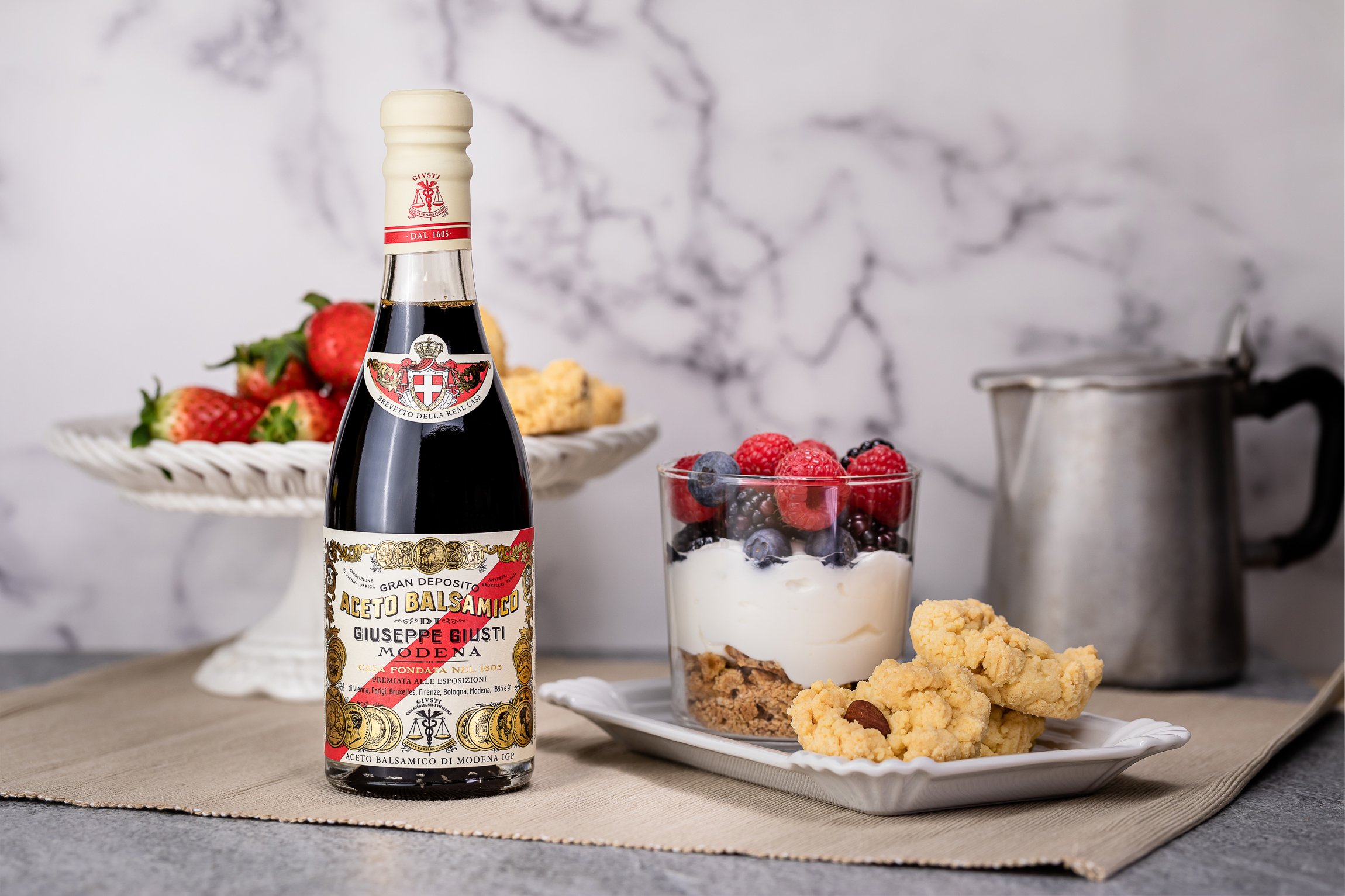
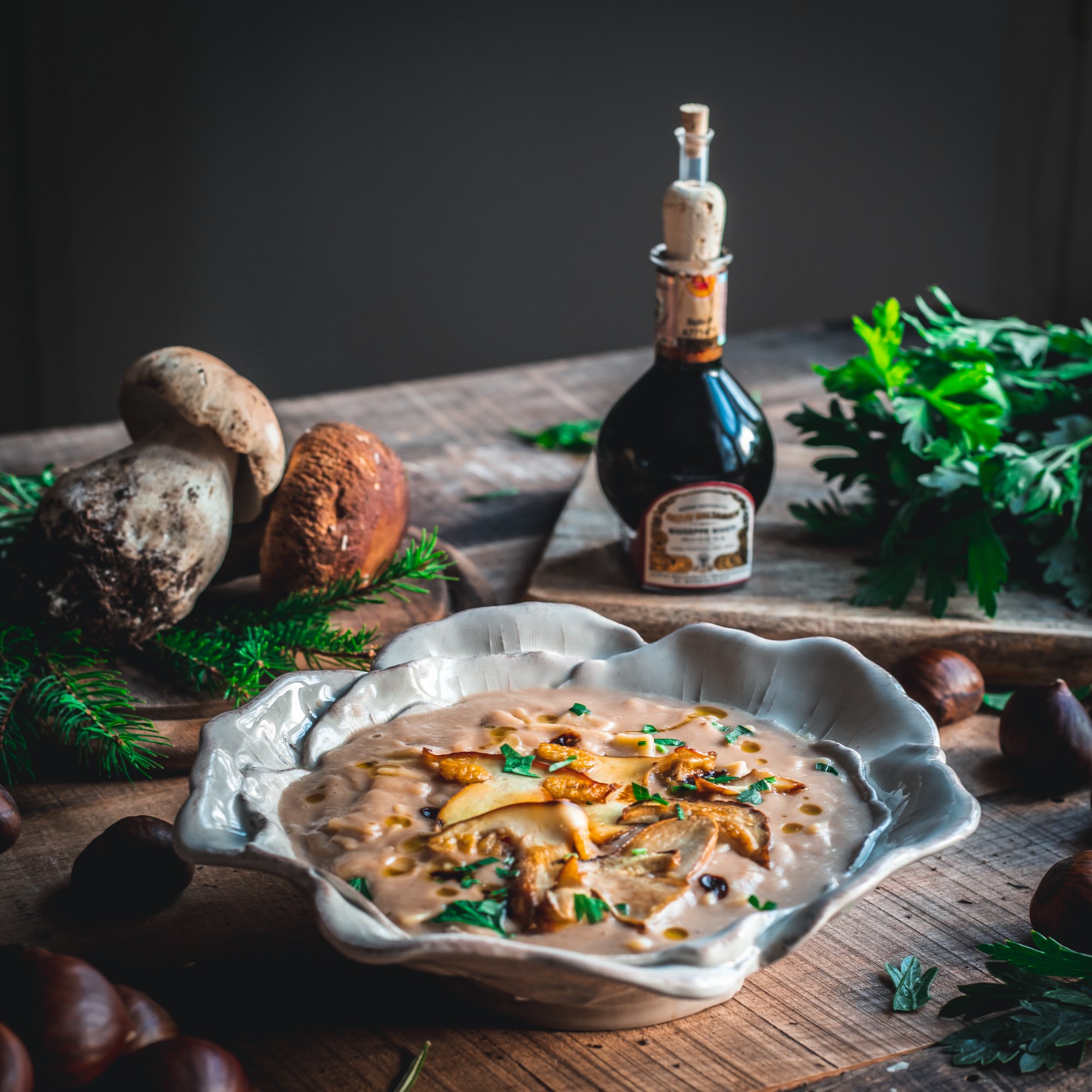
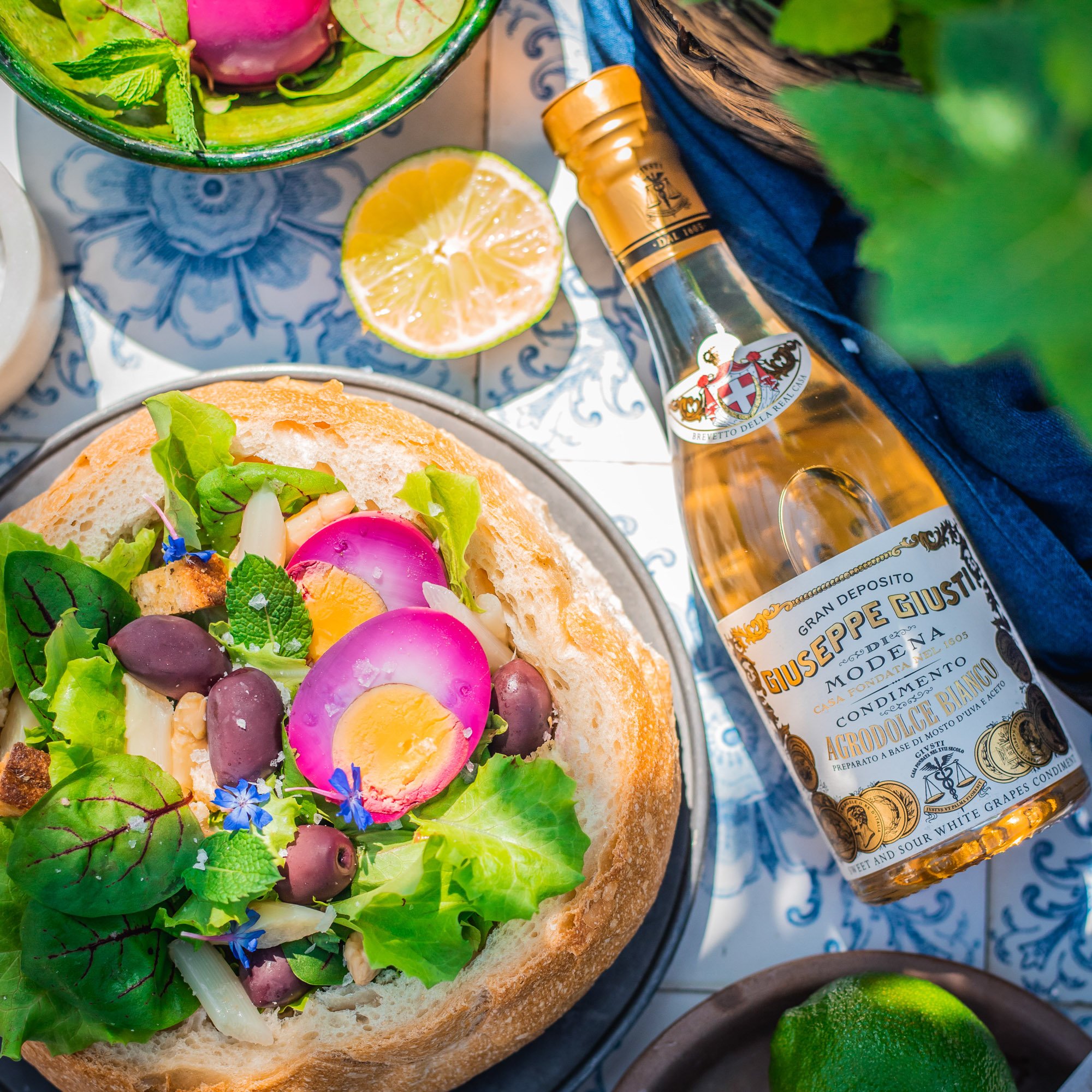
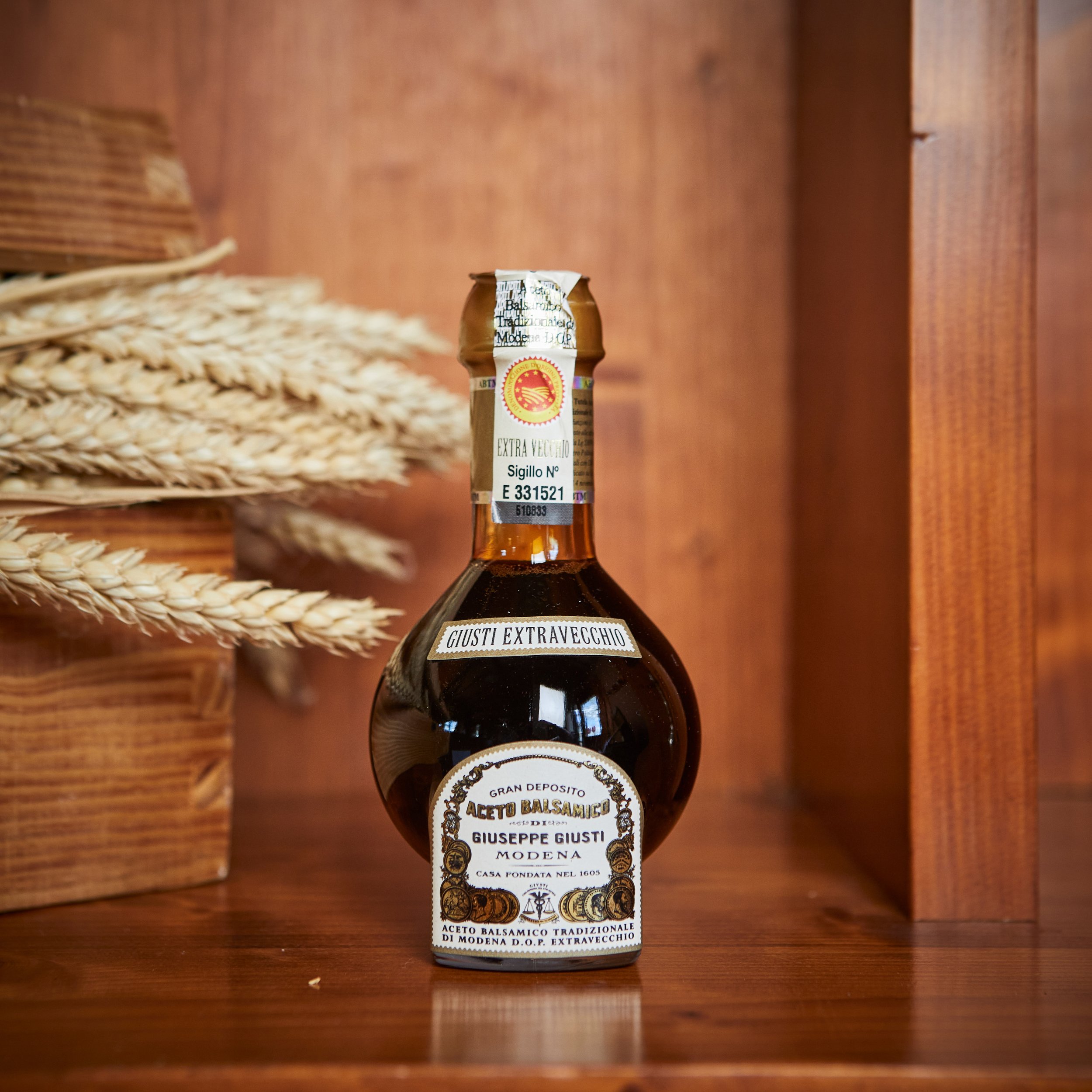
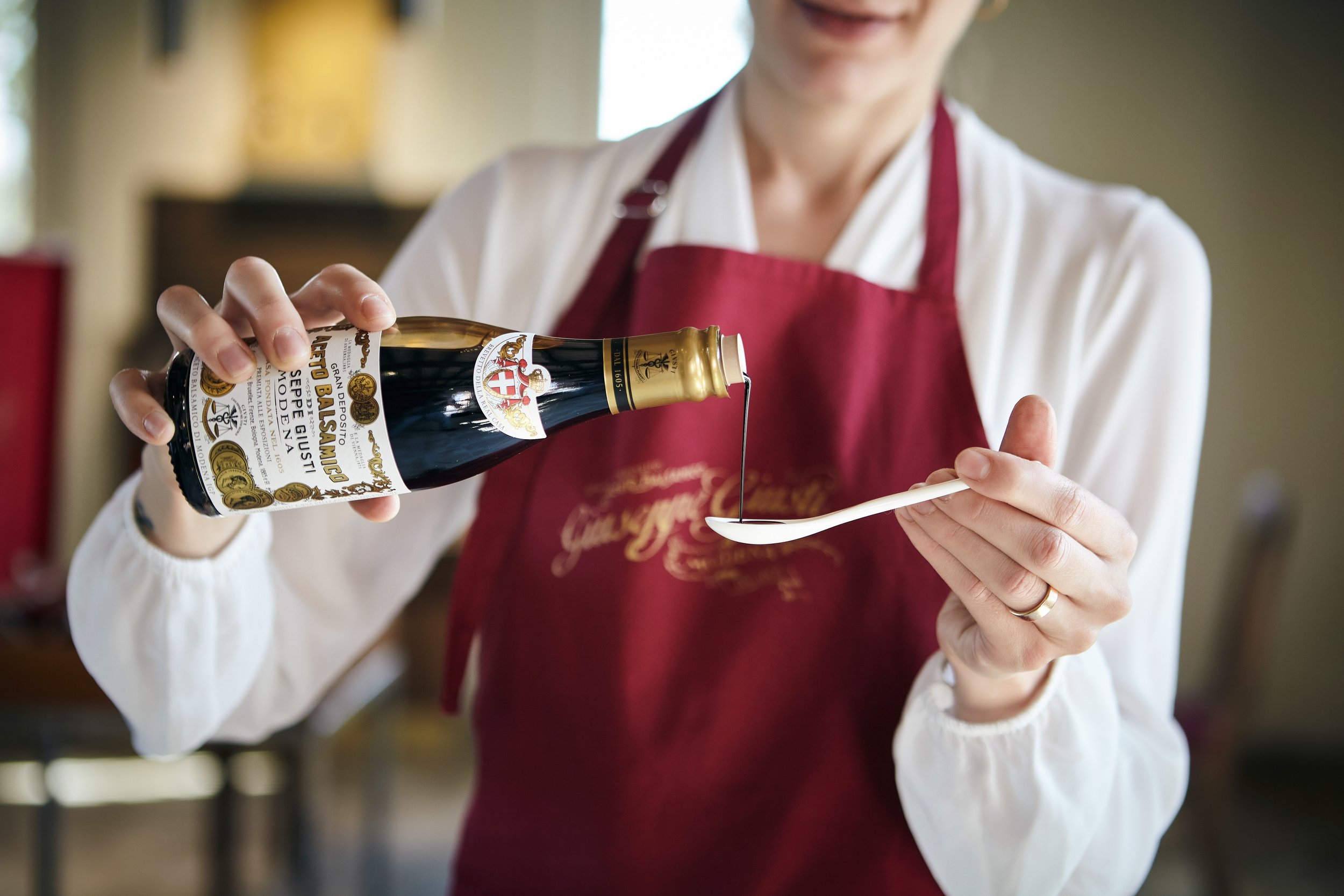
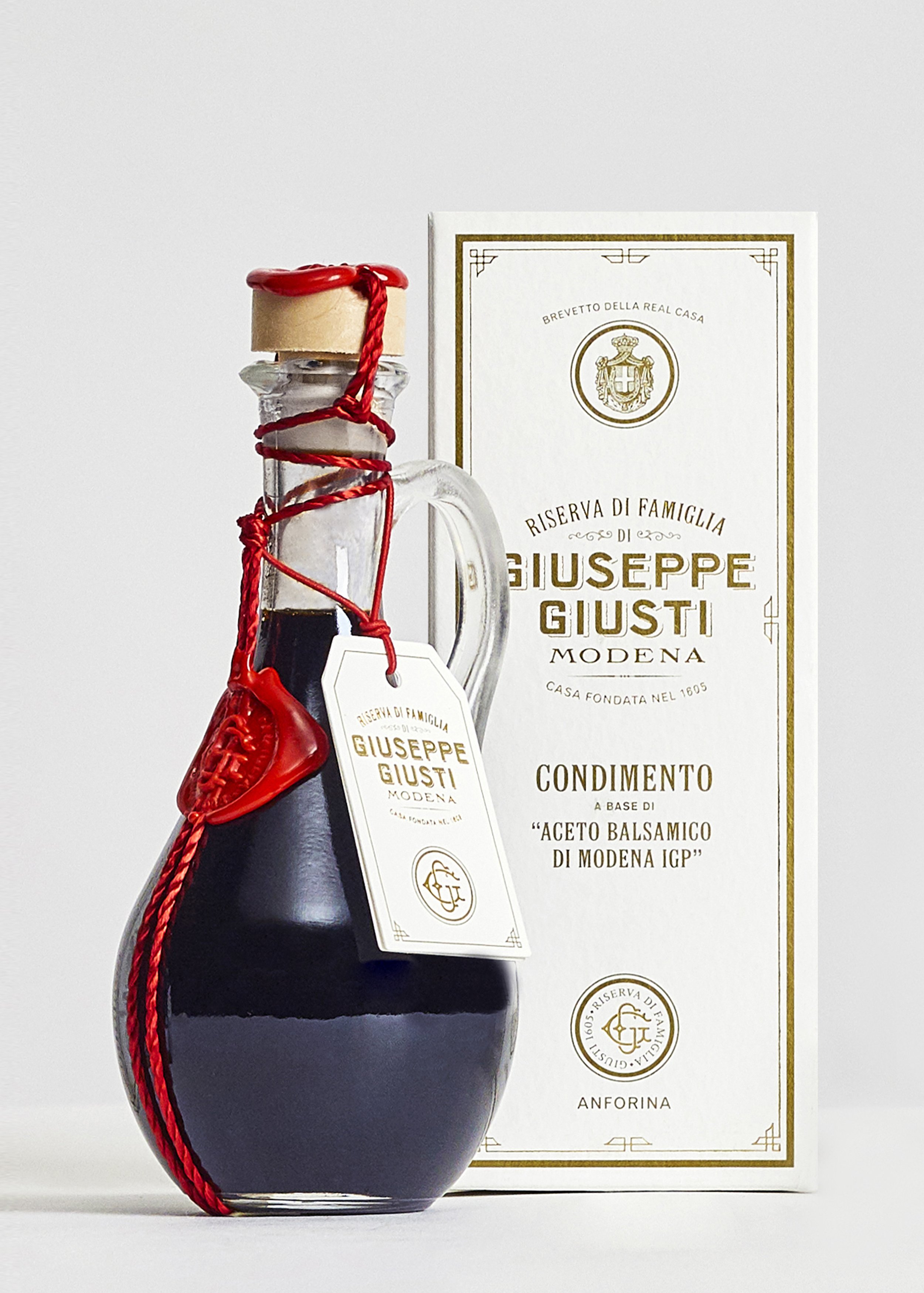
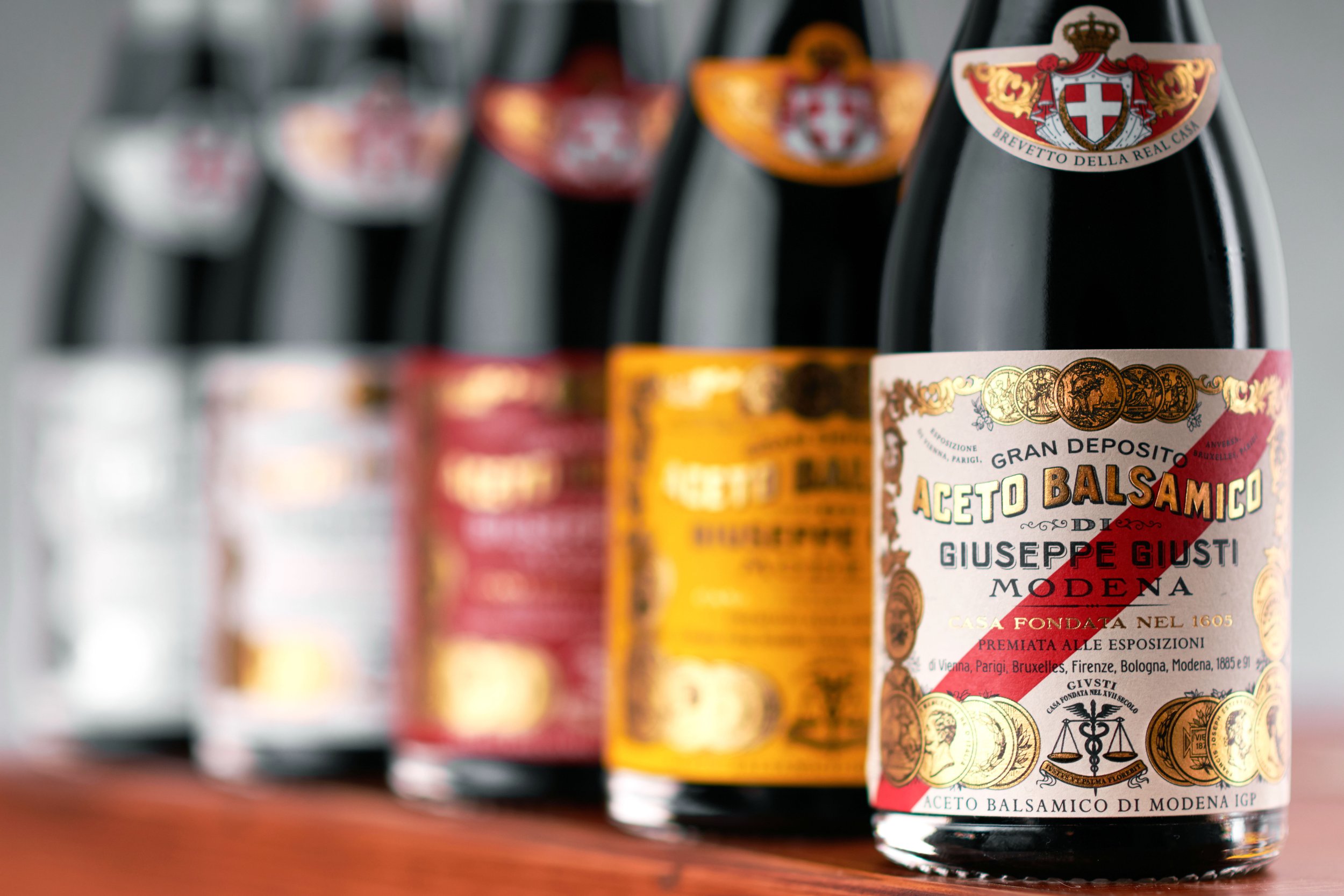
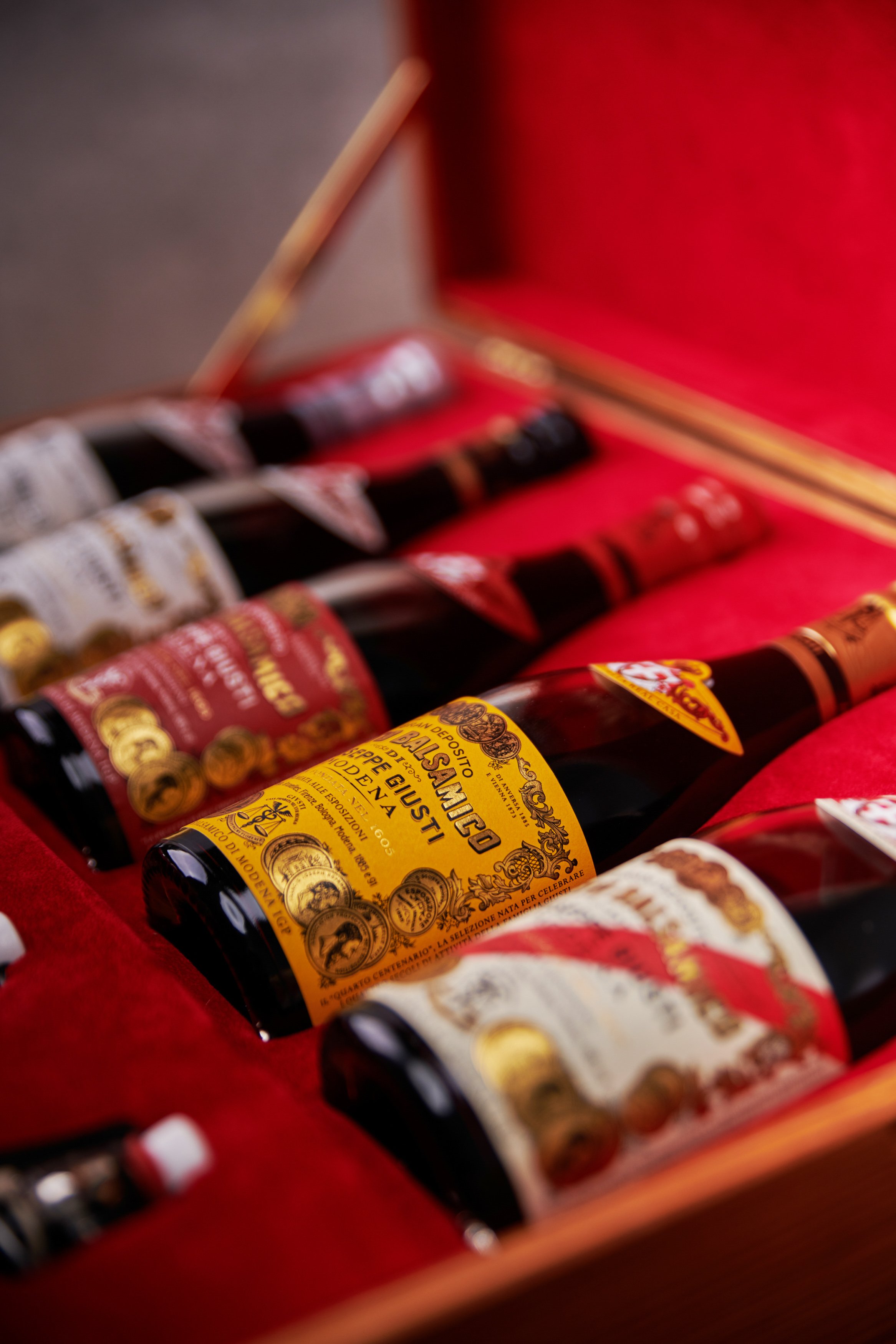
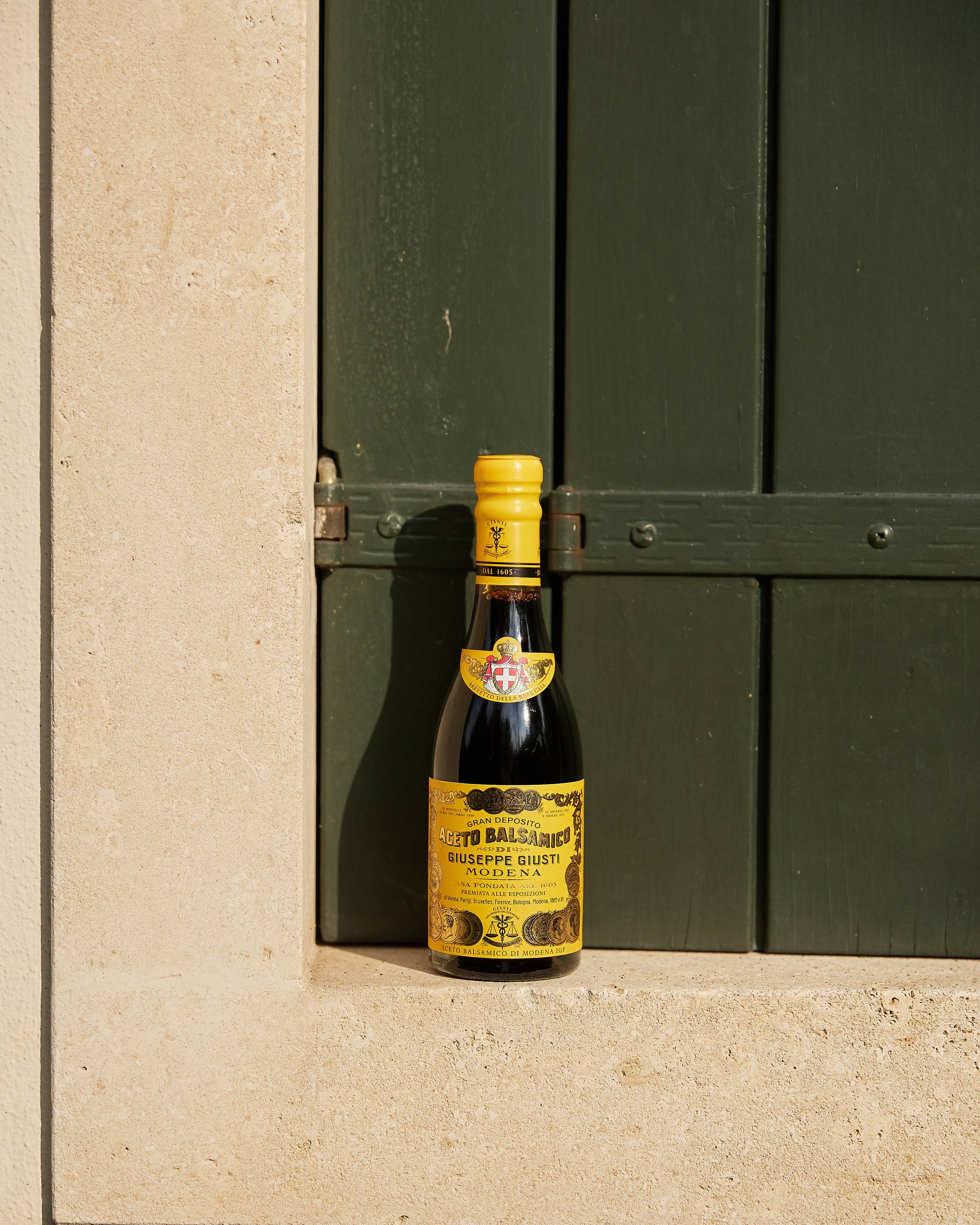
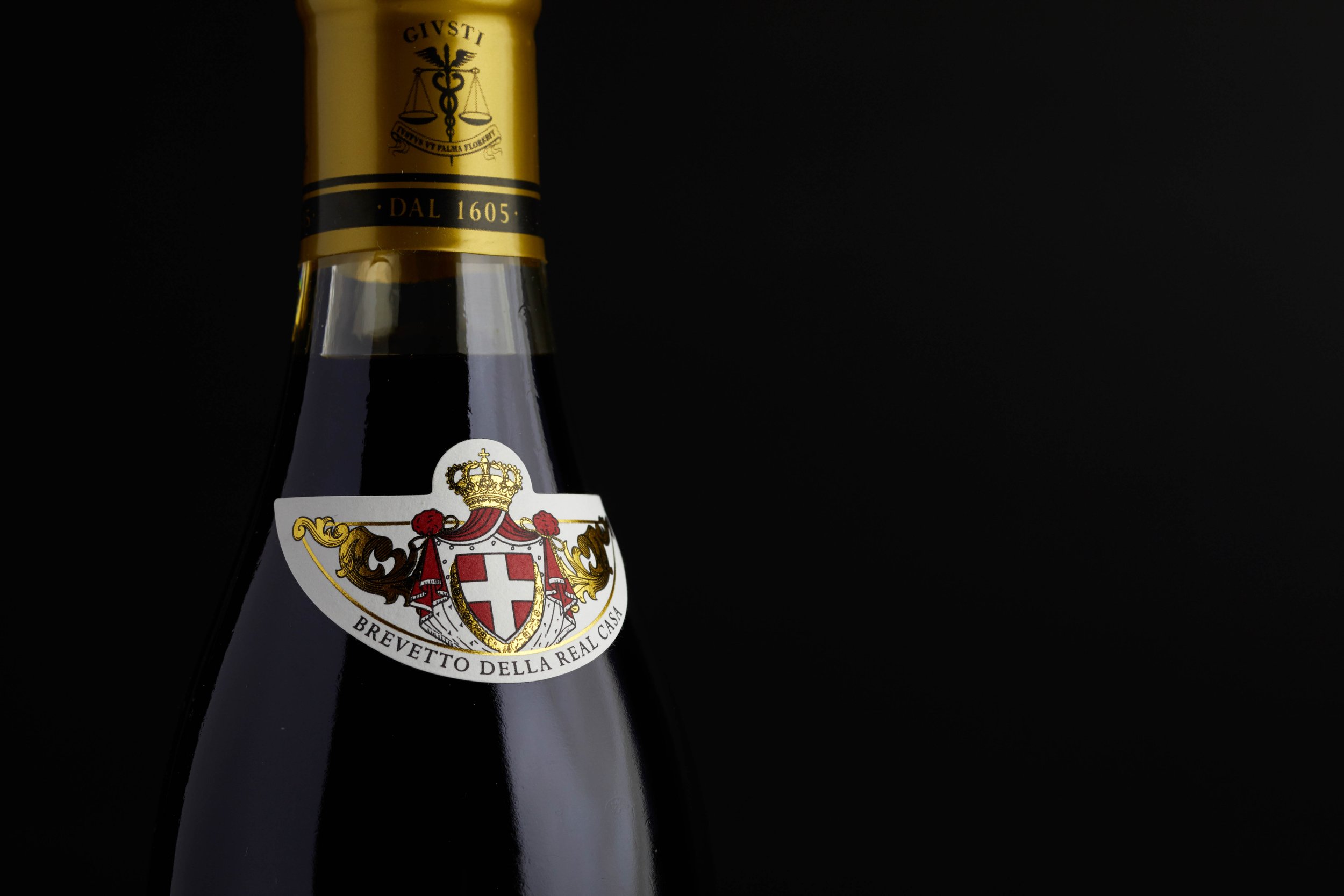
We are looking forward to a long partnership with Acetaia Giusti, and the opportunity to share these special vinegars with our customers. Should the range be of interest for your venue or store, please contact us to arrange an appointment.
Christian Canala
Founder, Secco Fine Foods
Kris Lloyd Artisan Launch
We would like to officially welcome Kris Lloyd Artisan cheeses to Secco Fine Foods. Less than a year into the development of our cheese portfolio, we are proud to introduce one of South Australia’s most iconic artisan brands, and further enhance their already impressive market position with a particular intent to grow brand awareness in both retail and foodservice.
We asked Kris a few questions in light of the announcement:
1. What is the origin story of Kris Lloyd Artisan?
"Cheesemaking is a special form of alchemy where science meets magic." Kris Lloyd AM
Kris Lloyd Artisan, was established in 2014 to produce a line of premium handmade Buffalo Milk cheeses. Over the years, the Kris Lloyd Artisan range has grown to include Cow and Goat Milk cheeses with a point of difference. All our cheeses are made by hand to recipes that we have developed and refined over almost three decades. We can't wait to share some magic with you.
2. How excited are you to work with Secco and what do you see this partnership achieving?
We are delighted to be working with Secco to elevate the profile and understanding of the Kris Lloyd Artisan range, we have embarked in mutual training and appreciation across all products. We will work hand in glove B2B, with local chefs and look forward to developing strong relationships across the board.
3. Do you have any exciting plans coming up in the future for Kris Lloyd Artisan?
Our future is jam packed with excitement and we look forward to announcing our exciting plans as we celebrate 30 years in the business in 2024 and the 10 year milestone of Kris Lloyd Artisan. We will come to together with Secco on new product development that compliments both brands and tells a truly Australian cheese story.
Brand is paramount to us, and Kris’ holistic ethos for hand-made, high quality South Australian produce is one which we feel passionate about aligning with. Her range of curds, fetas, washed rind and semi-hard South Australian cheeses are iconic products that we’re excited to share with the trade, including a few cheeses new to the market.
For price or availability enquiries, or to arrange a tasting, please contact us.
We would like to officially welcome Kris Lloyd Artisan cheeses to Secco Fine Foods.
Less than a year into the development of our cheese portfolio, we are proud to introduce one of South Australia’s most iconic artisan brands, and further enhance their already impressive market position with a particular intent to grow brand awareness in both retail and foodservice.
Kris Lloyd, AM and Mitch Lloyd at Secco HQ with Nick Ridge, Sales and Operations Manager
We asked Kris a few questions in light of the announcement:
What is the origin story of Kris Lloyd Artisan?
"Cheesemaking is a special form of alchemy where science meets magic." Kris Lloyd, AM
“Kris Lloyd Artisan, was established in 2014 to produce a line of premium handmade Buffalo Milk cheeses. Over the years, the Kris Lloyd Artisan range has grown to include Cow and Goat Milk cheeses with a point of difference. All our cheeses are made by hand to recipes that we have developed and refined over almost three decades. We can't wait to share some magic with you.”
How excited are you to work with Secco and what do you see this partnership achieving?
“We are delighted to be working with Secco to elevate the profile and understanding of the Kris Lloyd Artisan range, we have embarked in mutual training and appreciation across all products. We will work hand in glove B2B, with local chefs and look forward to developing strong relationships across the board.”
Do you have any exciting plans coming up in the future for Kris Lloyd Artisan?
Our future is jam packed with excitement and we look forward to announcing our exciting plans as we celebrate 30 years in the business in 2024 and the 10 year milestone of Kris Lloyd Artisan. We will come to together with Secco on new product development that compliments both brands and tells a truly Australian cheese story.
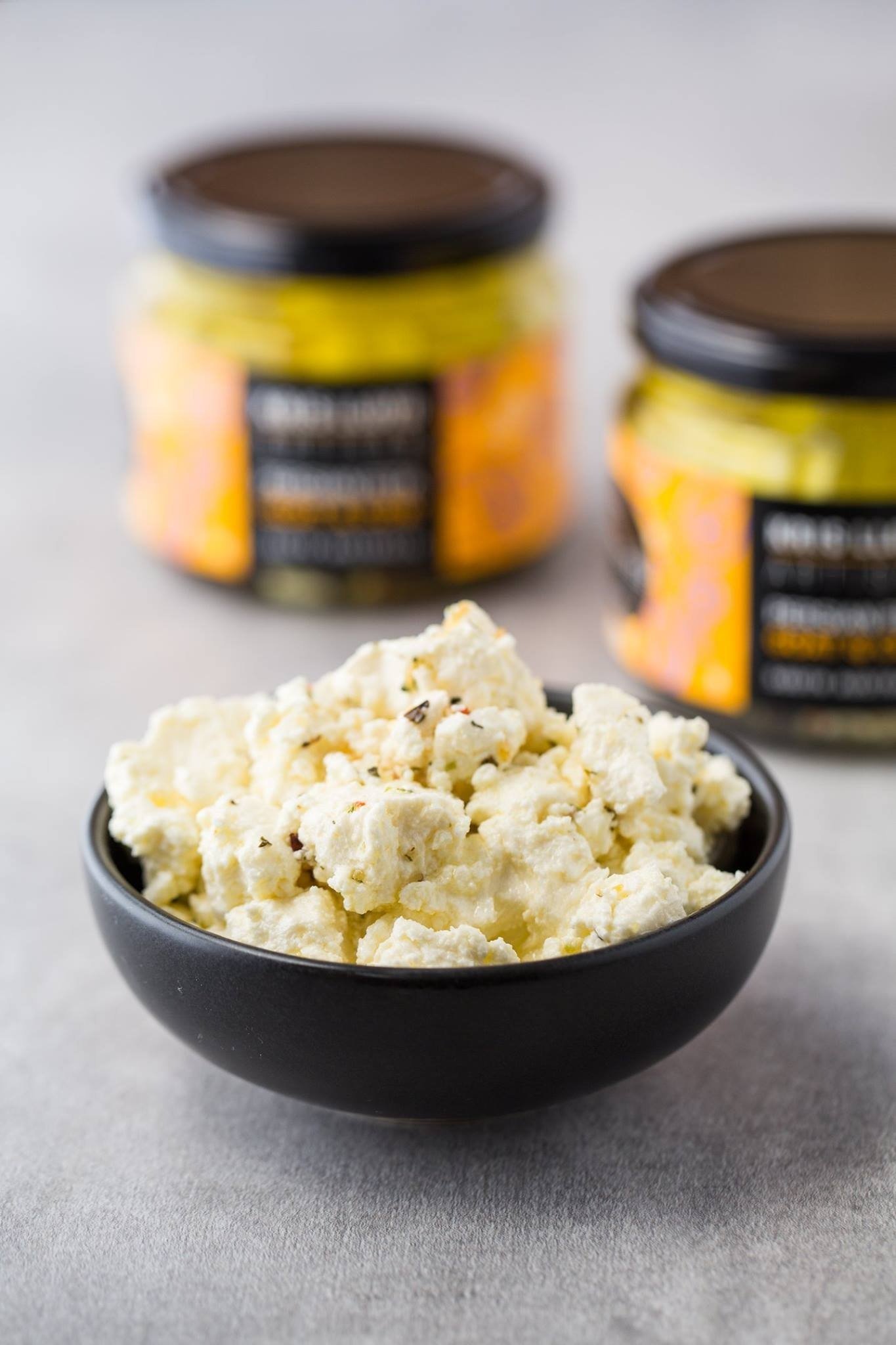
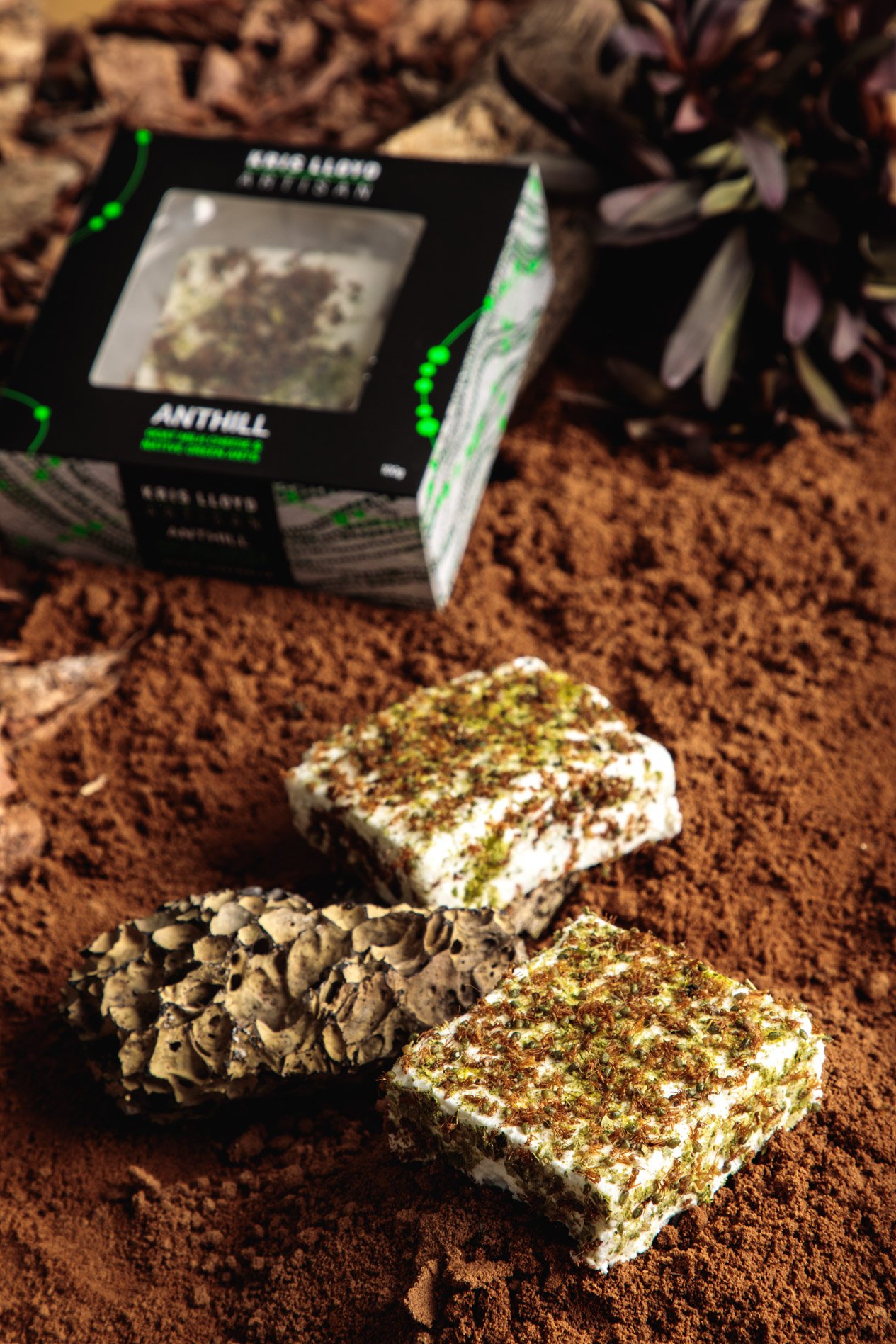
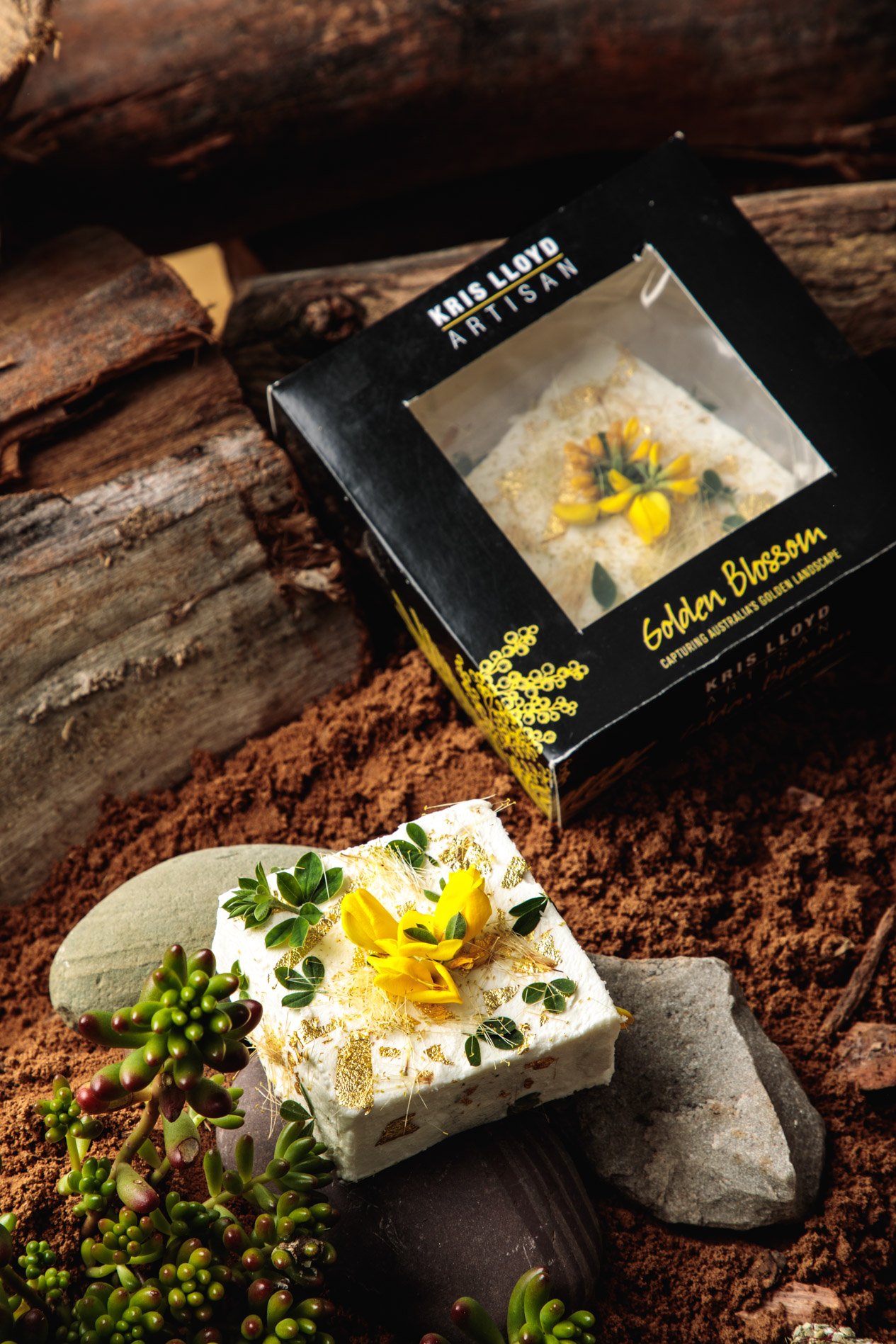
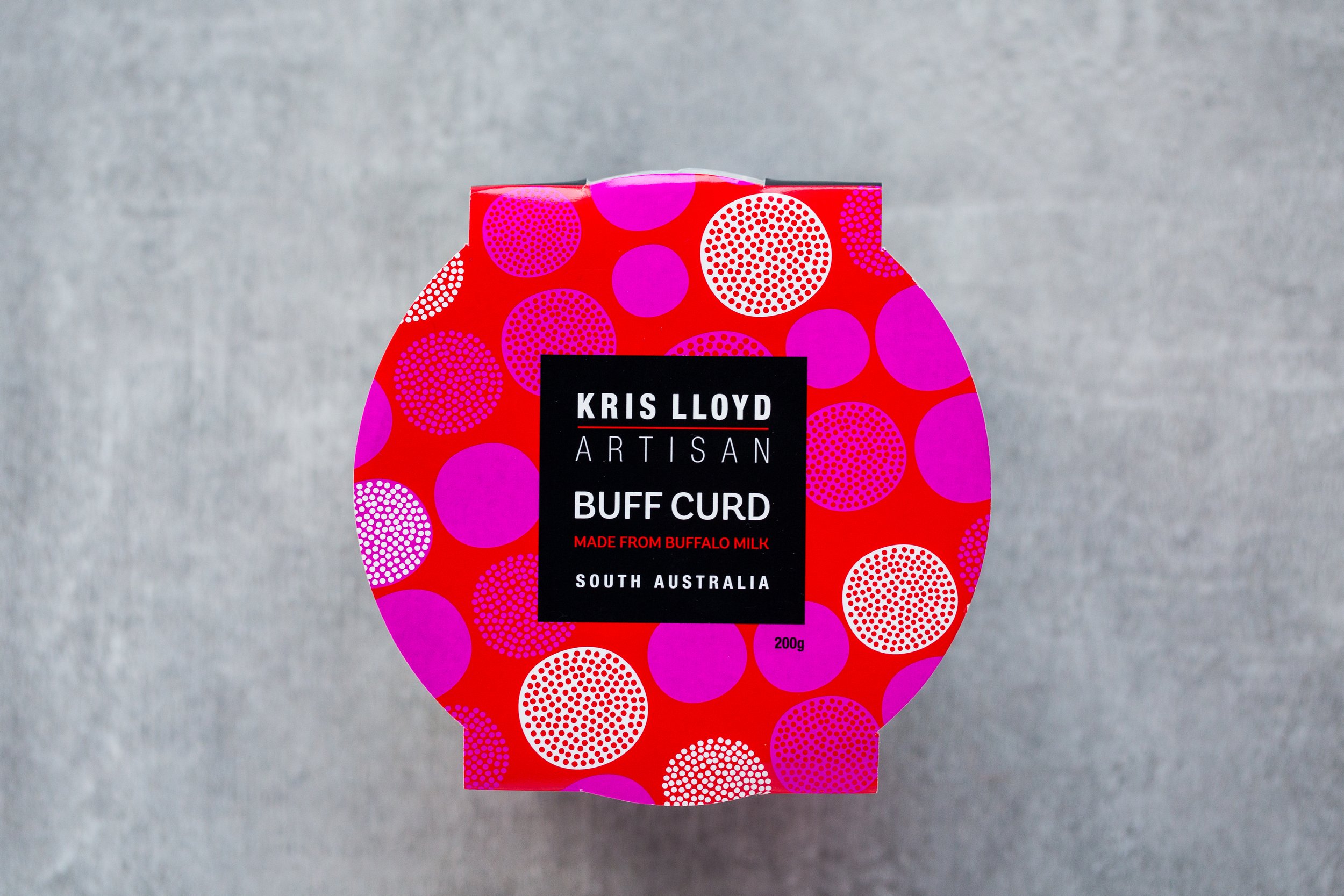
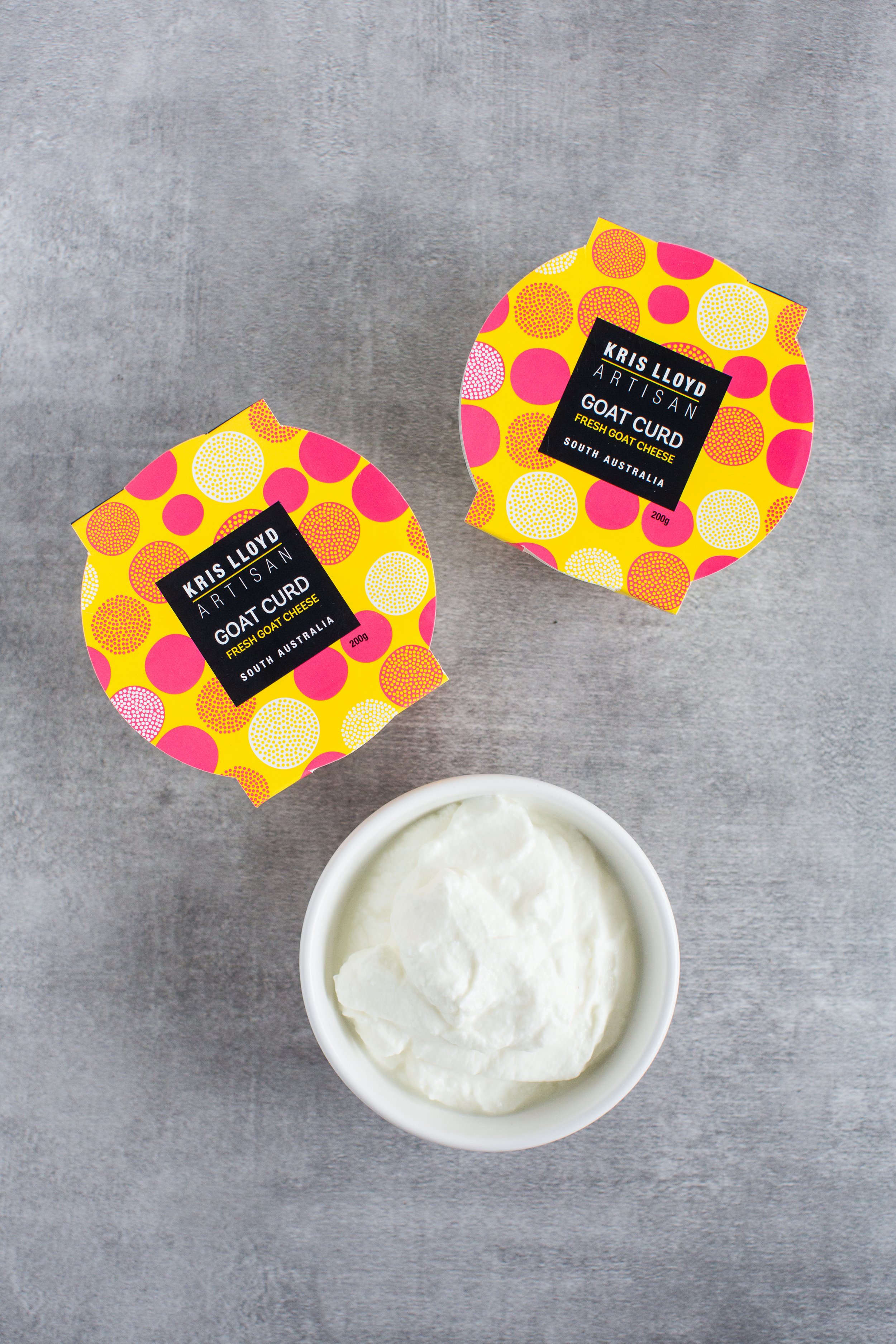
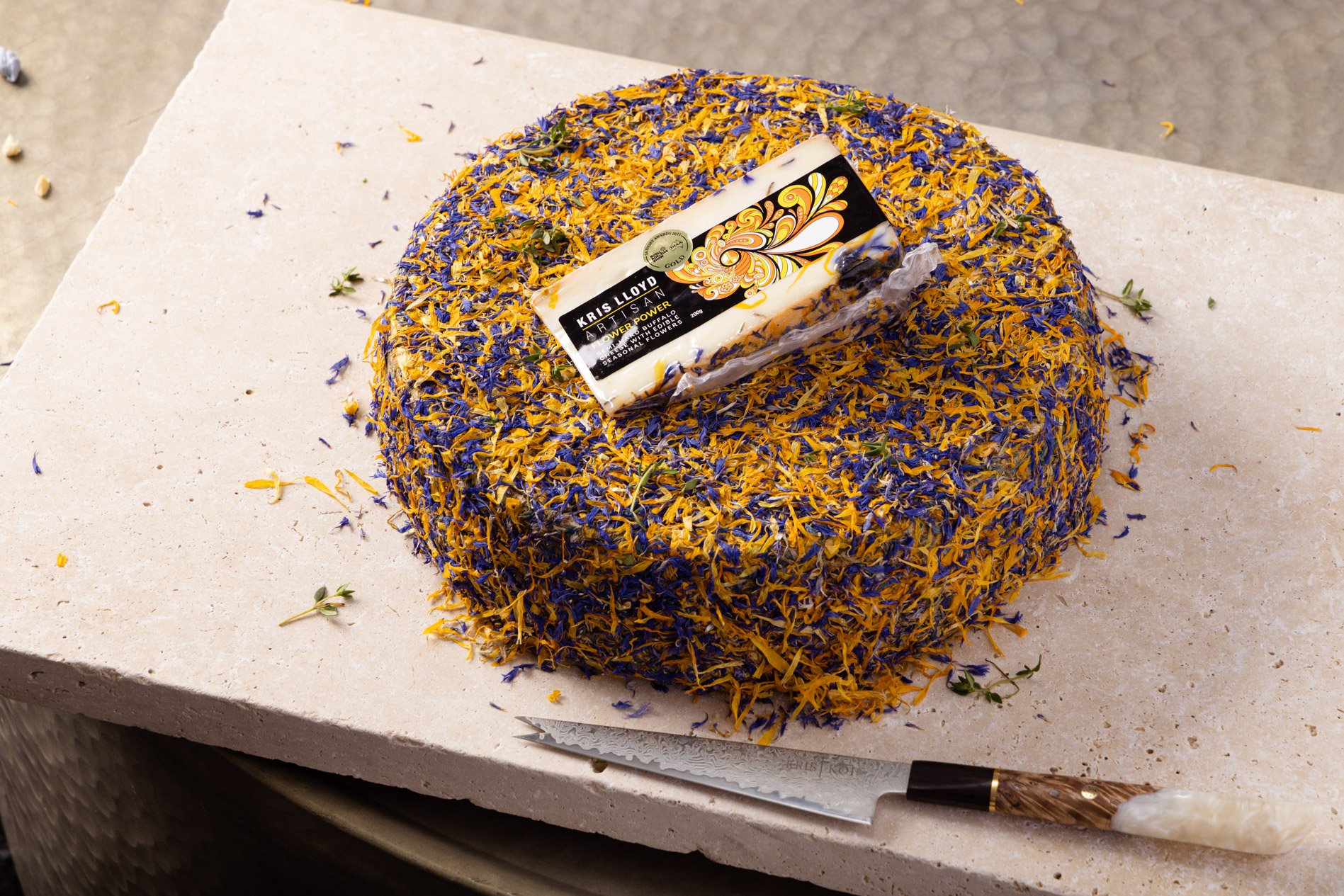
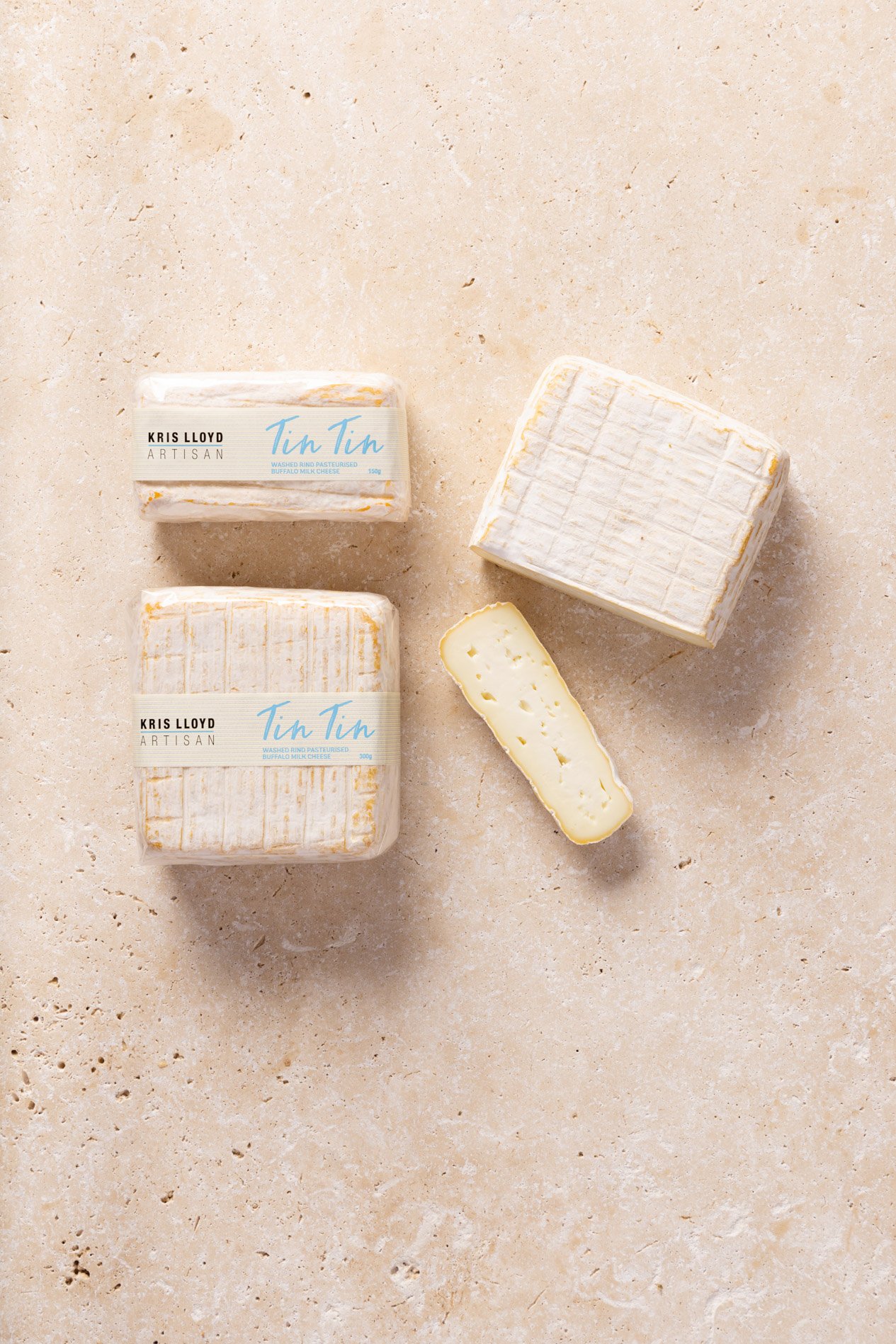
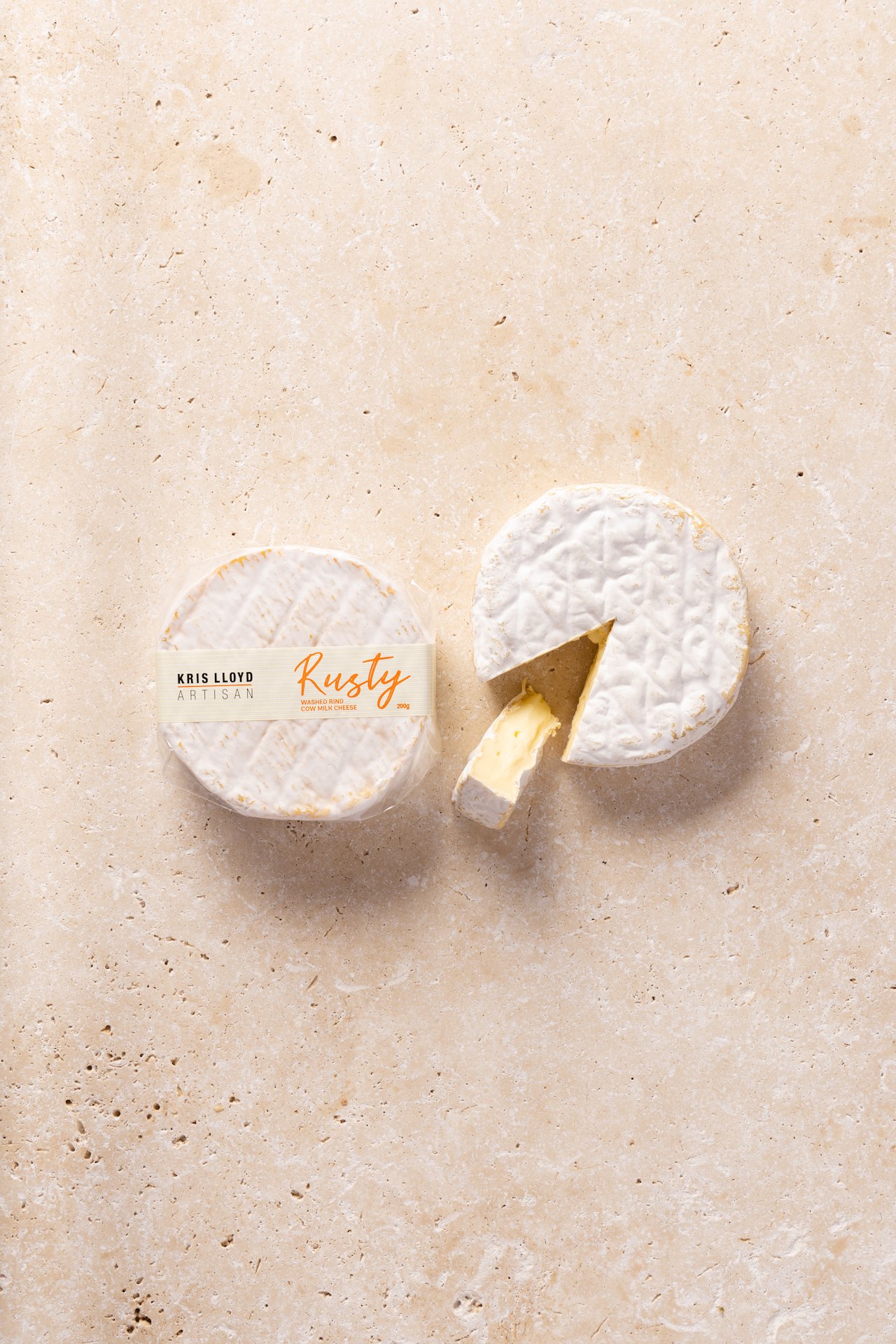
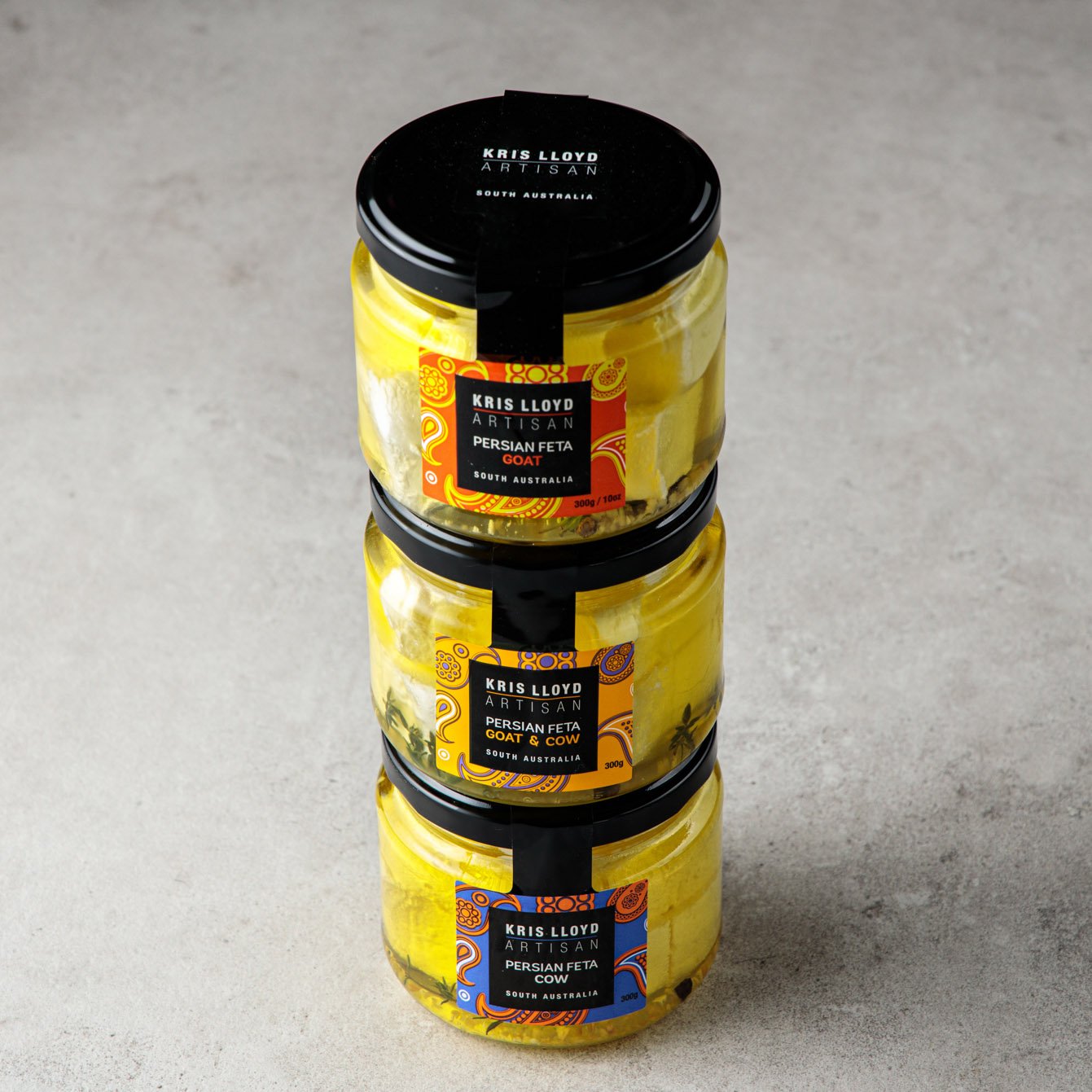
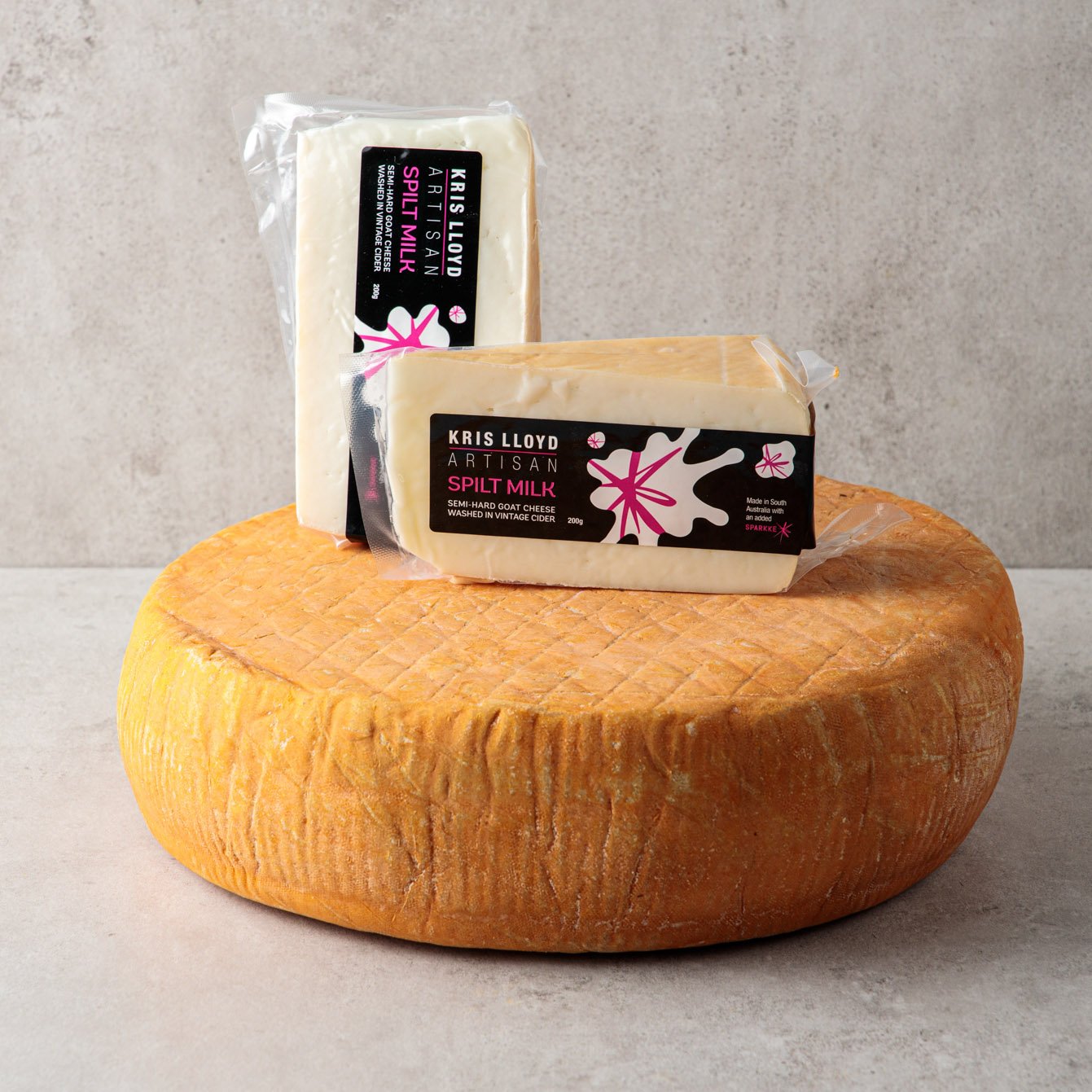
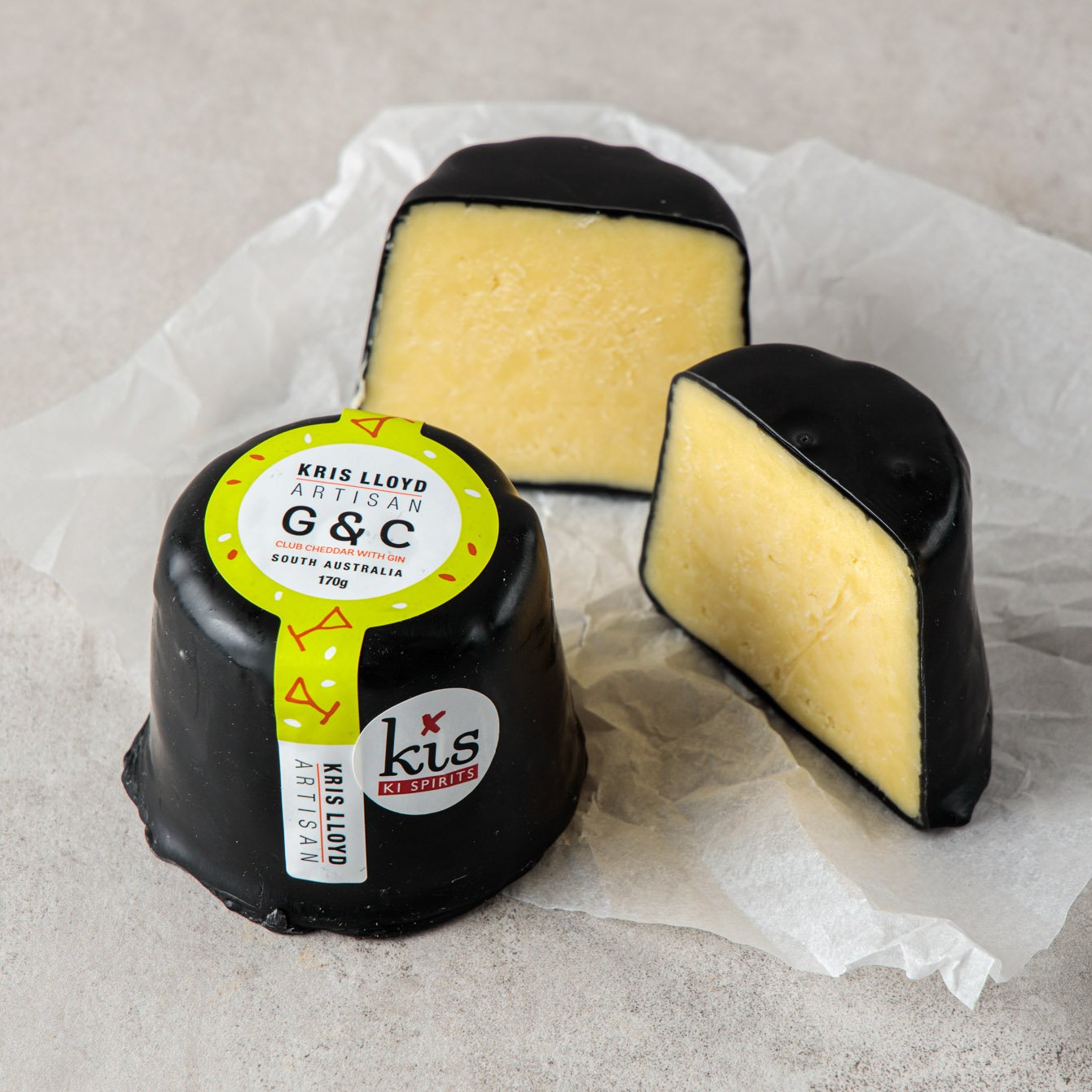
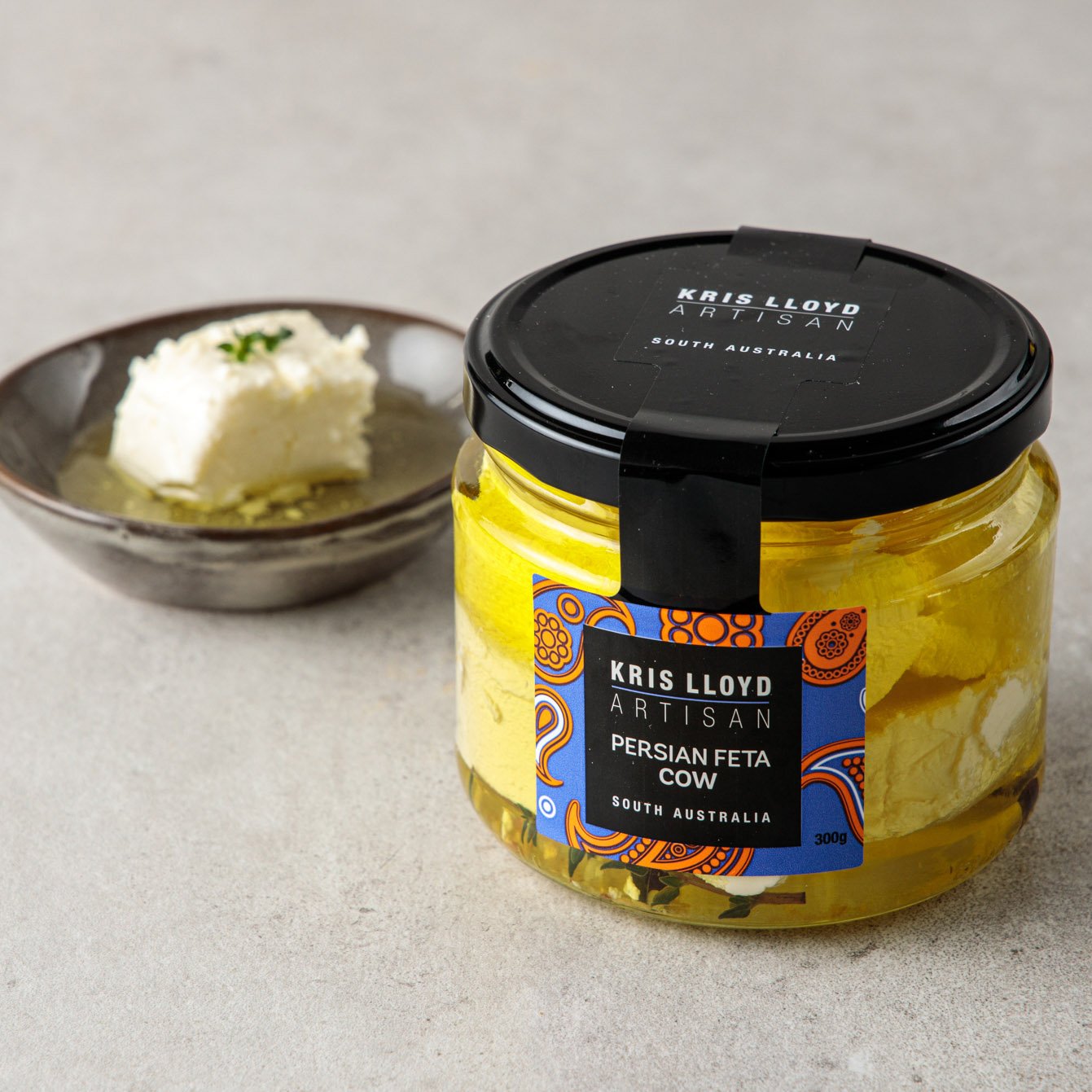
Brand is paramount to us, and Kris’ holistic ethos for hand-made, high quality South Australian produce is one which we feel passionate about aligning with. Her range of curds, fetas, washed rind and semi-hard South Australian cheeses are iconic products that we’re excited to share with the trade, including a few cheeses new to the market.
For price or availability enquiries, or to arrange a tasting, please contact us.
Kris Lloyd Artisan Range offered by Secco
Real Stories: Pioneering 100% Australian Extra Virgin Olive Oil
A well-crafted extra virgin olive oil has the ability to capture the essence of the olive's origin, cultivation methods, climate, season, soil quality, variety, region, and ripeness. Similar to the way fine wine is cherished, extra virgin olive oil can be valued and enjoyed.
"We are in a unique position in Australia with our wonderful climate, wonderful environment, with a melting pot of olive varieties, with our technology and with our 'can do' attitude. We can really make some special extra virgin olive oils that will add to its appreciation in a worldwide sense." - Joe Grilli, Primo Estate, McLaren Vale, South Australia
A well-crafted extra virgin olive oil has the ability to capture the essence of the olive's origin, cultivation methods, climate, season, soil quality, variety, region, and ripeness. Similar to the way fine wine is cherished, extra virgin olive oil can be valued and enjoyed.
"We are in a unique position in Australia with our wonderful climate, wonderful environment, with a melting pot of olive varieties, with our technology and with our 'can do' attitude. We can really make some special extra virgin olive oils that will add to its appreciation in a worldwide sense."
- Joe Grilli, Primo Estate, McLaren Vale, South Australia
The origin story of JOSEPH extra virgin olive oil
In 1987, Joe and his wife Dina embarked on their first trip to Italy as a married couple. During their visit to Tuscany, they explored numerous wine producers and noticed an interesting trend: many of these producers packaged their extra virgin olive oil in a similar manner to their wines. Joe and Dina found this concept appealing.
Coincidentally, in the same year, they crafted the Moda Amarone Cabernet Sauvignon Merlot and decided to create a new label, JOSEPH, to showcase it. This sparked an idea to also bottle a small quantity of extra virgin olive oil from local olives to help promote the newly established JOSEPH wine label, which was set for release in 1989.
So, in 1989, they sourced 344-gallon stainless steel drums of extra virgin olive oil through their network of family and friends in Virginia, SA, where Joe had grown up. They manually bottled the first 600 liters of oil and labeled them with the JOSEPH brand.
During a lunch event at Rockpool Restaurant in Sydney in July of that year, where the 1989 Primo Estate Colombard was being unveiled, Joe brought along a sample bottle of JOSEPH extra virgin olive oil. Esteemed individuals like Neil Perry, Simon Johnson, Gay Bilson, John Susman, and Barry McDonald, among others, were present at the event. Joe saw this as an opportunity to gauge their opinion on his new Australian extra virgin olive oil.
At that time, there were no commercially available Australian extra virgin olive oils on the market. While there were some olive oil products infused with herbs, there was no pure, 100% Australian extra virgin olive oil to be found.
Capturing the terroir of South Australia
After the lunch event, the JOSEPH Extra Virgin Olive Oil garnered significant interest from food experts, particularly Simon Johnson, who suggested Joe send him a few cases to distribute among Sydney's food lovers. This marked the beginning of the JOSEPH Extra Virgin Olive Oil journey, which experienced overwhelming demand and nearly sold out. However, sourcing enough olives for increased production proved challenging in the early days.
To address this, Joe embarked on expeditions in search of olives. He would gather olives from the parklands in central Adelaide, where remarkable older groves existed, particularly in North Adelaide and the eastern parklands. He also obtained permission to pick olives from the oldest olive trees in Adelaide located in the Beaumont and Skye area of the Adelaide foothills. These trees were remnants of the Davenport grove, planted in the 1860s, and many of them still thrived. Joe cherished the opportunity to use these olives, often reflecting on how Sir Davenport, who originally planted them for pharmaceutical purposes, would feel knowing they now adorned the tables of food enthusiasts.
Numerous expeditions followed, taking Joe and his team of olive pickers to various regions such as Eden Valley, Willunga, and Keith in the south east of South Australia, to gather olives. The olives were promptly pressed while fresh, and in the early years, with only a few presses available, they would operate around the clock during the season. Bottling JOSEPH Extra Virgin Olive Oils was a laborious process, done one bottle at a time through a tap at the bottom of a stainless steel tank, as bottling facilities were nonexistent for a long time.
A harmony between traditional olive oil making and modern technology
Moving ahead to the late '90s and early 2000s, the modern Australian olive oil industry began to take shape. High-tech continuous presses emerged, enabling olives to be pressed at their peak freshness and producing pristine oil. Additionally, the best Italian olive varieties like Frantoio (Tuscany), Leccino (Tuscany), and Coratina (Puglia) were planted, along with other exceptional varieties from different countries. Modern-style groves and vibration machines were utilised to efficiently harvest olive trees.
"One of our greatest advantages is we do not have the burden of world traditions and cultures to get in the way. We can just use the bits of tradition that work. It is my hope that by telling my story and explaining my opinion from my perspective a quality olive oil producer, I can further the cause of extra virgin olive oil in Australia."
- Joe Grilli, Primo Estate, McLaren Vale, South Australia
Primo Estate and Joe Grilli have played a leading role in these developments, making them the proud producers of possibly Australia's finest extra virgin olive oil. Their ‘First Run’ and ‘Cold Pressed’ extra virgin olive oils have become 'first pours' at some of Australia's finest restaurants. Secco takes pride in being the exclusive distributor of JOSEPH premium extra virgin olive oils and vinegar in the South Australia.
Real Stories: Prosciutto di Parma vs. Prosciutto di San Daniele
Italian prosciutto is renowned for its thin, delicate slices, delightful balance of sweet and salty flavors, and intricate fat marbling. However, it's important to note that not all Italian prosciutti are equal. The term "prosciutto" refers to a dried product, a notion dating back to cooking documents from 200 years BC. These documents recommended a combination of salting and aging as a safe method to dry pork legs. Remarkably, this process has remained unchanged for over five centuries. In crafting these exquisite Italian hams, only three ingredients are permitted: pork leg, salt, and time. Due to the slow drying process, no preservatives are necessary to prevent spoilage. While prosciutto is produced in various regions of Italy, the most renowned ones are Parma and San Daniele.
Italian prosciutto is renowned for its thin, delicate slices, delightful balance of sweet and salty flavors, and intricate fat marbling. However, it's important to note that not all Italian prosciutti are equal. The term "prosciutto" refers to a dried product, a notion dating back to cooking documents from 200 years BC. These documents recommended a combination of salting and aging as a safe method to dry pork legs. Remarkably, this process has remained unchanged for over five centuries. In crafting these exquisite Italian hams, only three ingredients are permitted: pork leg, salt, and time. Due to the slow drying process, no preservatives are necessary to prevent spoilage. While prosciutto is produced in various regions of Italy, the most renowned ones are Parma and San Daniele.
Parma vs San Daniele: Differences and Is One Better Than the Other?
Prosciutto di Parma and Prosciutto di San Daniele are both exceptional Italian hams, making it difficult even for Italians to choose between them. Both hams hold the prestigious DOP (Denominazione d’Origine Protetta – Protected Designation of Origin) classification, ensuring that they are produced, processed, and packaged in specific geographical areas according to traditional methods. Therefore, the origin of both hams is protected by the Italian government.
1. Geographic Location & Climate
Prosciutto di Parma DOP is produced in Parma of the Emilia-Romagna region, while Prosciutto di San Daniele DOP is limited to the town of San Daniele in the Friuli Venezia Giulia region. The climate in these regions plays a role in the distinctive flavours and drying times of the hams.
Parma, located at the foothills of the Tuscan Emilia Apennines, experiences different air conditions compared to San Daniele, which is situated at the foot of the Dolomites, about 350 km away. The drier air in the Dolomites lends San Daniele ham a more aromatic, sweeter, and fattier taste.
Prosciutto di San Daniele DOP hails from the province of Udine in the Friuli Venezia Giulia region of northeastern Italy. Its unique flavour and quality are influenced by the cooling winds, higher elevations of the Dolomite mountains, and the nearby Adriatic Sea and Lake Garda. The microclimate, shaped by the alpine and Adriatic sea air, plays a crucial role in the curing process, resulting in the distinct taste and aroma of Prosciutto di San Daniele.
In Parma, the air from the nearby Versilia sea passes through chestnut groves and pine belts, collecting aromatic scents that contribute to the ham's unique sweet aroma. Proper airflow is essential during the lengthy drying process, ensuring even meat drying and preventing the growth of harmful bacteria. The favourable geographic location of Emilia Romagna allows for refreshing breezes to sweep through the curing rooms. Traditional curing rooms feature tall windows that facilitate the influx of fresh air.
2. Production Methods
The production methods for both Parma and San Daniele prosciutto are protected by the Designation of Origin certification, indicating similar approaches. However, the breed of pigs used, their diet, and the salting process differ, resulting in distinct flavour profiles. San Daniele hams are stacked during aging (Parma hams are hung instead), which compresses the meat slightly, intensifying the flavours and yielding sweeter, saltier, and darker-coloured meat compared to Prosciutto di Parma.
3. Breed & Diet
Prosciutto di Parma DOP strictly adheres to regulations set by the Consorzio del Prosciutto di Parma. Only heritage hogs from the Parma and Langhirano regions are allowed for producing prosciutto. Interestingly, these hogs are fed Parmigiano-Reggiano whey, which enhances the flavour, fat content, and texture of the cured meat. Parmigiano-Reggiano cheese also originates from Emilia Romagna and pairs exceptionally well with prosciutto.
In San Daniele, pigs enjoy a nourishing diet consisting of whey and premium grain as they roam the dry air of the Dolomite foothills. These factors work together to give Prosciutto di San Daniele DOP a distinctively sweet and aromatic character that sets it apart from other prosciutti.
4. Salting Process
The salting process differs between San Daniele and Parma. San Daniele employs a dry salting process, while Parma uses dry salt on the lean part of the pork leg and moist salt on the fat.
5. Taste
San Daniele prosciutto tends to be slightly drier and saltier than Parma due to the legs being pressed for a few days after salting, allowing the salt to penetrate the meat further.
6. Leg Size & Fat Content
San Daniele legs are often smaller and contain more fat compared to Prosciutto di Parma.
7. Price
Due to the fewer producers in San Daniele, it is generally more sought after and, consequently, more expensive. Parma has nearly 200 prosciutto producers, whereas San Daniele has only around 30.
8. Aging
The age of the prosciutto also affects the flavour. Older hams (20 months or more) will be drier and saltier, while younger legs (16 months) will be more moist and balanced. Younger prosciutto can be more challenging to slice. San Daniele ham ages for a minimum of 400 days, while Parma ages for at least 455 days.
9. Visual Differences
The main visual differences lie in the shape of each ham. San Daniele appears compressed during the salting phase, resembling a mandolin. Additionally, the trotter is kept intact to aid in the ham drying process. Parma, on the other hand, has a more natural oval shape and the trotter is removed.
10. Branding
Each ham is branded with a hot iron, bearing distinct identification marks. Parma receives a 5-point crown branding, while San Daniele is marked with the initials SD.
11. Quality of the producer & Final thoughts
The quality of the producer plays a significant role in determining the overall quality of the hams. Both Parma and San Daniele have excellent producers. To find the best fit for your menu or personal preferences, tasting and comparing the two hams is the most reliable way to decide.
Villani Salumi’s historic salumi production (Image Courtesy: Villani Salumi)
Villani Salumi
Renowned as one of the finest producers of Prosciutto di Parma, Villani excels in crafting authentic Italian prosciutto and a variety of exceptional salumi, including the delectable culatta. Situated in the heart of Castelnuovo Rangone, a small town located 40 kilometers south of Modena in the Emilia-Romagna Region, the Villani factory has been a prominent fixture since its establishment in 1886 by Costante and Ernest Villani. They are Emilia-Romagna’s oldest salumi producer and one of the oldest in Italy, currently in their 5th generation.
Over time, Castelnuovo Rangone has gained a reputation as a hub for salumi production in Italy, with a significant portion of the local population employed by Villani in the creation of high-quality prosciutto and other salumi. Additionally, the town is home to the esteemed Villani family Salumi museum, known as Il Museo della Salumeria or MUSA, which has become a notable tourist attraction in the region. This museum celebrates the family's heritage, passion, innovation, and unwavering dedication to producing exceptional salumi.
The Villani family appreciates the longstanding nature of their craft. In their museum, there is a display highlighting one of the ancient Roman streets in Rome, Via Panisperna, which translates to "street of bread and leg ham." Who would have guessed that the Romans had a penchant for a prosciutto panino? In the 1930s, one of Costante and Ernesta's sons returned from a trip to the United States, bringing back new technology he had learned from the American meat industry. Among the innovations were drying hangers used in America's ham industry, which played a vital role in modernising salumi production for the Villani family. This integration of new technology significantly enhanced quality, production efficiency, and packaging for Villani. As a result, Villani proudly exported their first shipment of salumi directly to New York over 80 years ago.
Villani's ability to blend modern technology with time-honoured techniques enables them to overcome traditional challenges. During the aging process of prosciutto, rancidity can impact its quality. However, through meticulous temperature and humidity control, Villani masterfully produces prosciutto and other salumi with a rich, deep, and pure flavor that culminates in a clean and refreshing taste.
We are very proud to offer Vilani’s range of Prosciutto di Parma, Prosciutto di San Daniele and Culatta exclusively in South Australia from our sub-distributorship agreements with importer Savour and Grace.
See Villani’s range of offerings from Secco - https://www.seccofinefoods.com.au/villani
Villani Salumi’s Website - httphttps://www.villanisalumi.it/en
Real Stories: Cantabrian Anchovies, “MSC” & Sustainability
Not all anchovies are the same in terms of taste, texture and quality. On one hand we have hardcore fans of the delicacy, while on the opposite end of the spectrum we have who are best described as mere haters. Whichever camp you may belong to, Anchovies have been with us since the 16th century, profoundly loved the Greeks and the Romans, eventually expanding to the Mediterranean. Anchovies are a staple in South East Asian countries, stemming from their popularity in Ancient China.
The tiny fishes may seem to be in abundance in the vast oceans across the world, but the quest for fine food has led humans to identify that certain species and geographical locations offer the best of the best. Such is the case for the Cantabrian anchovy, Engraulis encrasicolus, which are a true representation of Spanish food culture and an incredible offering from the Basque country.
Not all anchovies are the same in terms of taste, texture and quality. On one hand we have hardcore fans of the delicacy, while on the opposite end of the spectrum we have who are best described as mere haters. Whichever camp you may belong to, Anchovies have been with us since the 16th century, profoundly loved the Greeks and the Romans, eventually expanding to the Mediterranean. Anchovies are a staple in South East Asian countries, stemming from their popularity in Ancient China.
The tiny fishes may seem to be in abundance in the vast oceans across the world, but the quest for fine food has led humans to identify that certain species and geographical locations offer the best of the best. Such is the case for the Cantabrian anchovy, Engraulis encrasicolus, which are a true representation of Spanish food culture and an incredible offering from the Basque country.
The MSC Certification
When the numbers of Cantabrian anchovies was deemed to be alarmingly low, the entire fishing ground of the Cantabrian sea was closed off for 5 years during 2005 to 2010 to let the anchovy population grow. One has to bear in mind that the fishermen and their families largely depended on fishing as their sole means of livelihood. In fact, the women of this region have been historically been involved in both fixing the fishing nets as well as skillfully fileting each anchovy in the canneries, some of which have been in the business for well over a 100 years. To not be able to depend on fishing, was a period of uncertainty for many of their livelihoods. However, it was the combined efforts of the fishermen guilds, canneries and other stakeholders which saw the region work towards the Marine Stewardship Council’s (MSC) assessment for certification. The assessment was conducted by Bureau Veritas, an independent certification body, for compliance with MSC’s three environmental standards: the health of the anchovy population, the impact of the fishery on the marine ecosystem, and efficient fishery management in 2014. A year later in 2015, the first ever European Anchovy (Engraulis encrasicolus) fishery was awarded the prestigious Marine Stewardship Council (MSC) certification for sustainability.
Fishermen pose with the MSC Certified Blue Tick logo at the Bay of Biscay (Image Courtesy: EFEVerde)
How did they do it?
Cantabrian anchovy fishers have been supporting responsible fishing for years, using a selective fishing method like the purse seine.
The purse seine method of fishing (Image courtesy: MSC)
Purse seines are used in the open ocean to target dense schools of single-species fish, like the Cantabrian Anchovy. A vertical net ‘curtain’ is used to surround the school of fish, the bottom of which is then drawn together to enclose the fish, rather like tightening the cords of a drawstring purse. This method of fishing in open water is generally considered to be an efficient form of fishing. It has no contact with the seabed and can have low levels of bycatch (accidental catch of unwanted species). MSC certified fisheries using purse seines must ensure that they leave enough fish in the ocean to reproduce. This can be achieved by using a mesh size large enough to allow smaller fish to swim free.
Read the entire story here.
The Future
By submitting to MSC full assessment, the Bay of Biscay fisherman not just improved the anchovy population, but proved their offering as a world-class fine food in terms of sustainability and traceability. This certification adds value to Cantabrian anchovy products in both national and international markets. Consumers can rest assured that they are buying an anchovy that has been captured according to the internationally-accepted sustainability MSC standards and that they will always be able to trace our product back to its source, the Cantabrian Sea.
Conservas Olasagasti: An iconic Artisan producer of Cantabrian anchovies
The Orlando family has been devoted to the traditional, artisan ways of producing and preserving Olasagasti anchovies and tuna since the 1920s. During the height of the fishing season (late March until early June), they send small fishing boats out into the Cantabrian Sea near San Sebastian. The best fish are prepared by hand using traditional methods and are served in the best tapas bars throughout Spain. All Olasagasti anchovies are MSC (Marine Stewardship Council) certified. In fact, they were at the forefront of supporting the MSC assessment for Cantabrian anchovies as a producer.
“A favourite with chefs, these clean, salt-forward bites are a great all-rounder anchovy to keep in the pantry for entertaining. Olasagasti (in their words, "hard to say but easy to eat") anchovies would go beautifully atop oxheart tomatoes with a crack of pepper or served in a classic Caesar salad.” - ‘Five Best Anchovies to Buy’ by Gourmet Traveller.
We are very proud to offer Olasagasti’s range of Anchovies and Tuna exclusively in South Australia from our sub-distributorship agreements with importer Fino Foods.
See Conservas Olasagasti’s range of offerings from Secco - https://www.seccofinefoods.com.au/conservas-olasagasti
Conservas Olasagasti’s Website - https://www.conservasolasagasti.com/en/
Real Stories: Usukuchi Shoyu
Nestled in the northwest of the Harima Plain, Tatsuno city in Hyogo Prefecture is blessed with a mild climate and is a town with abundant greenery. Situated on the bank of Ibo river which flows through the center of Tatsuno City and on into the Seto Inland Sea, Suehiro Shoyu has been brewing ‘Usukuchi’, a light-coloured Japanese soy sauce, using traditional brewing methods since 1879. Tatsuno City is widely known as the birthplace of usukuchi soy sauce, where it has been brewed since the 1600s. The underground water of Tatsuno is of the ‘soft’ nature, making it very suitable for making soy sauce.
Japan is a land of fine food artisans who have perfected their craft for generations dating back as far as the Edo period and beyond. Secco Fine Foods is fortunate enough to offer a selection of these amazing products for our customers courtesy of our distribution partnership with Fino Foods. They have curated the Artisan Japanese range by none other than Nancy Singleton Hachisu, a true icon who is at the forefront of bringing these handcrafted and special products to the world outside of Japan. According to Nancy, the fundamental Japanese flavourings can be reduced to an acronym (SA-SHI-SU-SE-SO) taken from the Japanese syllabary: sa = sato (sugar), shi = shio (salt), su = su (vinegar), se = seiyu/shoyu (soy sauce) and so = miso.
Artisan Japanese seasonings are to be added sparingly and thoughtfully, as they are deeply-flavoured and yield consistently satisfying results. Today we take a look at Shoyu, the quintessential Japanese Soy Sauce. Artisan Shoyu is vastly different from most commercially produced soy sauce, as it involves traditional brewing methods which only a handful of producers are continuing to uphold. While Koichuchi Shoyu is the most common soy sauce found in Japan, there are other types of Shoyu which offer even more depths of flavour. One of these is the coveted Usukuchi, the Japanese light-coloured soy sauce, which is quite popular in the Kansai area (the greater Kyoto and Osaka region).
The Origin
Nestled in the northwest of the Harima Plain, Tatsuno city in Hyogo Prefecture (northwest to Osaka) is blessed with a mild climate and is a town with abundant greenery. The river ‘Ibo’ flows through the center of Tatsuno City and on into the Seto Inland Sea, and during summer time is filled with freshwater fishes. Tatsuno City is widely known as the birthplace of Usukuchi soy sauce, where it has been brewed since the 1600s. The underground water of Tatsuno is of the ‘soft’ nature, making it very suitable for making soy sauce.
Koikuchi (dark-coloured) Shoyu (Left) and Usukuchi (light-coloured) Shoyu (Image courtesy: Kohei Shibuya / 279victoriast)
Usukuchi Shoyu vs. Koikuchi Shoyu: The Difference in Colour
‘Usu’ in Japanese means ‘Light’ while ‘Koi’ translates to ‘dark’.
Usukuchi shoyu is quite different from its ‘regular’ counterpart: Koikuchi (dark) shoyu. The former is visibly lighter in colour, but still has a wonderful flavour and smell. From just colour and aroma though, it can seem like that Koikuchi should be saltier than its lighter counterpart. However, Usukuchi is saltier and it has all to do with the fermentation process. Usukuchi takes about one-third the time to ferment compared to Koikuchi, with more salt. The longer the fermentation, the darker the shoyu becomes. And if left to go on for longer, Usukuchi’s extra salt amount can cause the bacteria that faciltates the fermentation to die. The fermentation time is also dependent on the season, with summer taking only 2.5 months because of the heat, compared to 8 months in winter. Getting the right amount of time to ferment to get the desired colour therefore is an art, and there are only a few remaining artisan producers in Tatsuno (compared to 60 beweries before) who are still committed to this art through natural brewing methods.
Usukuchi should not be confused with ‘light/lite’ soy sauce which have a less fat content, as the light in it’s name only refers to the colour.
The high salt content is balanced by the higher ratio of wheat to soy used to make Usukuchi, compared to Koikochi. The wheat contributes a natural sweetness, making Usukuchi great for adding soy sauce flavours to dishes without adding much colour. In fact, a well-made Usukuchi shoyu like Suehiro’s has a distinct rose-coloured hue.
The fermented mash called Moromi (Image courtesy: Kohei Shibuya / 279victoriast)
How it’s Made
Like other forms of Japanese soy sauces, Usukuchi shoyu is made by fermenting soy beans with salt. In addition to soy beans, Usukuchi also calls for lightly toasted wheat, which helps keep the flavour mild, and Mirin. Artisan producers use natural brewing methods and ferment the mash (known as Moromi) of the abovementioned ingredients in ceddar wood tanks. They will continue to ferment the Moromi until the desired colour is achieved, after which it is pressed to make ‘Usukuchi’ shoyu.
Traditional shoyu pressing (Image courtesy: Kohei Shibuya / 279victoriast)
How to Use ‘Usukuchi’
Since its saliter than regular shoyu, Usukuchi shoyu can be a bit challenging for cooks. As a general rule, cooks should add soy sauce to their food, allow the food to rest, and then see how salty it tastes. Salty flavors can develop or mellow after the soy sauce has been mixed with the food for a few minutes, and it is better to be patient than bitterly salty.
Artisan Usukuchi Producer: Suehiro Shoyu
Unfortunately, artisanal Usukuchi Shoyu is, as yet, a challenge to source outside of Japan due to there being such a small number of producers who still make it the traditional way. Most Usukuchi found are not naturally brewed and are commercial interpretation that barely scratch the surface of true Usukuchi-making. While using machines allow for easier control over the colour, it takes a true artisan to naturally brew this product to the desired colour.
Suehiro Shoyu has been brewing ‘Usukuchi’, a light-coloured Japanese soy sauce, using traditional brewing methods since 1879 in their wooden headquaters on the bank of the Ibo river in Tatsuno. They are one of the last remaining brewers in Tatsuno and in the whole of Japan who have been specialising in Usukuchi for more than 140 years.
Aspergillus oryzae, known as ‘Koji Malt’ (Image Courtesy: Kohei Shibuya / 279victoriast)
What sets Suehiro apart is their deep commitment to traditional methods, and the use of local high quality soy and wheat. They also brew in small batches in fiberglass tanks unlike cedar tanks like most brewers, overseen by around 10 experienced staff, called the Kuran, who ensure consistent quality without the use of industrial machines. The wooden building that houses these tanks however, attribute most to the unique taste and flavour of their Usukuchi, as it is home to specific strains of beneficial bacteria, or Koji malt. Even though its easier to control the colour using modern machines, Suehiro insists on their generations of artisanal skills before finally pressing it to make it very delicate and rich Usukuchi.
Renowned Japanese soy sauce sommelier, Keiko Kuroshima, writes in one of her articles that she had not heard of any other breweries that operate with the focus on “naturally-brewed” Usukuchi shoyu like Suehiro. “It's really a battle with 'colour' every day. Because the water of the Ibo River is soft, it is said that the color will be lighter if it is brewed in this land. Filtering and heating, the time of preparation and the brewing period, we have repeatedly researched and improved everything from long ago,” says current President Takuya Suehiro.
‘Kauro Murasaki’ Smoked Shoyu
The Japanese word for ‘Purple’, Murasaki is an old nickname for premium shoyu. The name speaks to the deep, almost purple colour excellent shoyu (and purple is the regal colour associated with the emperor). This inherent preciousness is why shoyu should be used sparingly. With Artisan shoyu, a dash goes a long way to introducing that little hint of umami. Kaoru-Murasaki (smoked soy sauce) is trending in Japan. We investigated dozens and judged Suehiro Shoyu’s to be far superior. Not only is it made with high quality Usukuchi shoyu from whole Japanese soybeans and wheat, but it is one of the few that is naturally smoked directly over cherrywood with time without using additives such as liquid smoke.
Real Stories: Brie
The quintessential bloomy rind soft cheese and sister to Camembert, Brie originated from its namesake region in France.
One of the most popular categories of specialty cheese, bloomy rind cheeses are covered with a white, downy rind. This is usually a mix of Penicillium candidum, a fluffy white-coloured mold and Geotrichum candidum, a squiggly cream-coloured fungus. As a bloomy rind cheese ages, the cheese’s lactic acid continues to break down curd into a more complex, flavourful and aromatic spreadable and gooey cheese.
Brie is pale in colour with a slight grayish tinge under a rind of white mould. The edible rind packs a lot of flavour, depending on ingredients used and the production methods. Compared to Camembert, it has a slightly higher butterfat content around 60%-75%.
The quintessential bloomy rind soft cheese and sister to Camembert, Brie originated from its namesake region in France.
One of the most popular categories of specialty cheese, bloomy rind cheeses are covered with a white, downy rind. This is usually a mix of Penicillium candidum, a fluffy white-coloured mold and Geotrichum candidum, a squiggly cream-coloured fungus. As a bloomy rind cheese ages, the cheese’s lactic acid continues to break down curd into a more complex, flavourful and aromatic spreadable and gooey cheese.
Brie is pale in colour with a slight grayish tinge under a rind of white mould. The edible rind packs a lot of flavour, depending on ingredients used and the production methods. Compared to Camembert, it has a slightly higher butterfat content around 60%-75%.
The Origins
Cheeses resembling what we know today as Brie have been around since the 8th century. Historians state that Charlemagne enjoyed a brie-style cheese at his coronation banquet in 768 CE. The historic region of Brie roughly corresponds to the modern department of Seine-et-Marnein the Île-de-France region.
The AOP
Though the name Brie is not a controlled or protected entity, two key regional Bries have been granted the European protection standards AOC (appellation d’origine contrôlée) and AOP (appellation d’origine protégée): Brie de Meaux AOP and Brie de Melun AOP. These raw milk plush Bries must be made in a specific geographical area which is the Brie region, located about 60km east and southeast of Paris.
Brie de Meaux AOP
With AOC status granted in 1980, followed by AOP protection received in 1996, the Brie de Meaux is the best known of the two protected version. It is also larger, with each wheel weighing around 2.8kgs and aged for around 6-8 weeks. Manufactured in the town of Meaux in the Brie region of Northern France since the 8th century, it is known as the “Queen of Cheeses”. It is strictly a raw milk cheese which forms a luscious interior with flavours and aromas of mushrooms, melted butter, yeast, and brassica.
Brie de Melun AOP
The other protected Brie from France is the Brie de Melun, weighing around 1.5kgs, smaller than Brie de Meaux. It is an ultra-rich, naturally fermented cheese with a custard-like texture and savoury flavours of sautéed mushrooms. It is produced in the Île-de-France region and made using lactic fermentation. Aged around 4-8 weeks, it has a stronger flavour and more pungent smell. Strictly made from raw milk, it also gained AOC status in 1980 and AOP protection in 1996.
Brie de Melun (Image Credit: Thesupermat)
Other traditional French Bries
Outside the AOP standards, there are a few well-known traditional french bries like Brie de Nangis, Brie de Provins, Brie de Coulommiers, le Fougerus, and Brie de Montereau. The longer aged versions of these cheeses, known as Brie Noir, also exist which have more pungent flavours and a darker colour.
Stabilised Bries? Double Cream? Triple Cream?
Most bries that are available in supermarkets are stablised bries, meaning they use stabilisers to quicken the fermentation process, resulting it a firmer texture that is commercially viable with longer shelf life.
Cheeses in the brie family are not double or triple cream by definition. Although many industrial versions are called double or triple cream “brie”, which simply means the addition of cream in the production process to for a creamier texture. Bloomy rind cheeses in France that actually are double and triple cream cheeses, such as Chaource and Brillat-Savarin, are not classified as Brie.
Raw Milk cheeses and Australia
Australia does not allow imports of raw milk cheeses. An article by Will Studd paints the current picture of this and unfortunately for us, the only way to experience the likes of Brie de Meaux and Brie de Melun is by travelling overseas. Pasteurised bries therefore, are the only options available across the country, but they will not truly 100% replicate the flavour of authentic raw milk brie. However, lactic bries offer a close alternative, which have a similar flavour profile to raw milk bries, yet do not possess the texture, nor the lack of depth of flavour in stabilised bries.
Secco is proud of offer one of these special lactic bries exclusively in South Australia.
Our offering
The L’Original Brie from Paysan Breton takes Brie production back to its traditional roots. It’s most important differentiating factor from Australian bries is that it’s a lactic brie made without any stabilisers. It also uses less rennet which results in a longer time to mature. It's stored in a beautiful wooden box that encourages the cheese to mature into a soft, fudge texture. Traditional raw milk Bries cannot be imported into Australia, so this is the closest thing to one that you can get made with pasteurised milk instead.
It has an earthy, mushroomy flavour with brassica notes and a rich and creamy texture very typical of a French brie. Read more.
Real Stories: Le Gruyère
Artisanal know-how handed down from generation to generation since the 12th Century.
The most famous of all Swiss cheeses, Swiss Gruyère's history can be traced back to 1115. The recipe and production methodology has remained fundamentally unchanged to the present day. The triad of Milk producers, Fromageries (Cheese dairies) and Affineurs (Maturers) work in unison to produce this cheese according to strict AOP standards, which ensure consistent quality before being enjoyed by billions around the world. Each wheel requires 400 litres of whole milk to produce a finished cheese with a weight between 25-35 kilograms.
Artisanal know-how handed down from generation to generation since the 12th Century.
The most famous of all Swiss cheeses, Swiss Gruyère's history can be traced back to 1115. The recipe and production methodology has remained fundamentally unchanged to the present day. The triad of Milk producers, Fromageries (Cheese dairies) and Affineurs (Maturers) work in unison to produce this cheese according to strict AOP standards, which ensure consistent quality before being enjoyed by billions around the world. Each wheel requires 400 litres of whole milk to produce a finished cheese with a weight between 25-35 kilograms.
The Origins
Gruyère owes its name to the region of Gruyère, in the Canton of Fribourg, in Switzerland where it has been produced since 1115. Around the 17th Century, the name 'Le Gruyère' was officially recognised with a boom in exports. Fribourg also experience rapid emigration during the 18th and 19th century, which saw the production of Gruyère expand to the nearby cantons of Vaud, Neuchâtel, and Jura and in a few municipalities of the canton of Bern. However, with no trade protection and with its quality as only means of defense, Gruyère was often imitated. As early as the mid-19th century, began a campaign towards structuring the trade as well as a fight for a recognised designation of origin.
Le Gruyere AOP Production Zone (Courtesy: Le Gruyere AOP)
The AOP
Discussions held in Madrid (1891), Paris (1926) and then Rome (1930) resulted in the signing of a first agreement to protect the denominations of goods and their origin. However, it was only in 2001 that Gruyère cheese was granted Controlled Designation of Origin (AOC - Appellation d’Origine Contrôlée) at the national level. In 2011, it received the Protected Designation of Origin (AOP - Appellation d’Origine Protégée) for all of Europe.
The Protected Designation of Origin (AOP) recognises a level of quality granted uniquely to certain products, deeply rooted in a region that gives it a specific character and an inimitable flavor. The AOP label guarantees the authenticity of products made according to traditional know-how.
The Triad
170 artisan dairies continue to produce Gruyère to AOP specifications sourcing raw milk from designated nearby farms. And only 11 affineurs currently operate in the Le Gruyère AOP Production Zone.
The Production
The triad of Milk producers, Fromageries and Affineurs follow strict production steps to ensure compliance with the AOP standards:
-
The cows giving milk destined to the production of Le Gruyère AOP feed exclusively on natural silage-free fodder without any additives. They are fed fresh grass in the summer and hay in the winter.
-
In copper vats, the milk from the morning’s milking is added to that from the previous evening’s milking. The cheese maker adds the lactic acid bacteria that matures and rennet that coagulates the milk. Since the milk isn’t heated before coagulating, it retains all its aromas – a unique characteristic of raw milk cheese.
-
The curd is separated into grains, using large rakes called cheese harps. The vat content is slowly heated for 40 to 45 minutes to 57°C.
-
The cheese grains are packed into moulds and marked with the designation Le Gruyère AOP. The cheese is identified with a casein identification mark, which contains the date of fabrication, the number of the wheel and the cheese dairy. Casein is a natural milk protein. This traceability is very important in the Gruyère AOP’s production. The cheese is then pressed for a period of 20 hours.
-
The cheese-maker removes the wheel from the press and places it in a salt water bath for 24 hours. The wheels are stored for 3 months in the cheese-maker’s cellars. The wheels are turned and rubbed almost daily in order for a nice rind to develop, which protects the wheel.
-
After three months of storage in the cheese maker’s cellar, the wheels are transported to a ripening cellar. There they complete their slow maturation for 5 to 18 months at a temperature of 15°C and humidity of 90%. During this phase, the cheese wheels are regularly turned and rubbed with a salt water solution.
-
After 5 months, the cheese wheels are inspected by a neutral commission to decide if all the quality requirements are met. Only then may a cheese wheel be graced with the name Le Gruyère AOP.
-
The Gruyère AOP is also a question of taste. Between 6 and 9 months, its soft and refined taste will delight palates in search of sweet pleasures. It is called “Classic”. Starting at 10 months, Gruyère AOP Réserve has a full-flavored and aromatic taste, which will please lovers of aromatic subtlety. Some wheels will be matured up to 18, or even 24 months for lovers of strongly flavoured cheese.
Milk production:
70% of the cattle's forage comes from the farm
No silage allowed
Milk is delivered twice a day
No additives
All milk is traceable
Milk is sourced close the cheese dairy (max 20km away)
Milk is used within 18 hours after milking
No pasteurisation, only raw milk
No preservatives
No growth hormones
Cheese production:
On any given day, Gruyère should be the first cheese to be made in the vat
An open copper vat with a maximum capacity of 6,600 litres should be used
Milk from both the evening and morning milk is used to make the cheese
Each wheel is given a casein mark detailing the manufacturing date and the cheese dairy's unique number
No additives
Affinage:
Matured for at least 5 months before consumption
Matured in the natural caves of cellars
Shelves made of spruce wood
Controlling the atmosphere in the cellar (temperature 12° to 18°C, humidity approx. 92%)
The Types
Le Gruyère AOP Classic - Matured for 6-9 months with a mild and sweet taste.
Le Gruyère AOP Reserve - Matured for more than 10 months with a full-bodied taste and a firm yet slightly crumbly texture.
Le Gruyère Bio - Made from organic milk and according to standards set by BIO-SUISSE. Matured for 6-9 months with a mild and sweet taste.
Le Gruyère d'Alpage AOP - Made between mid-May and mid-October up in the mountain pastures. Exclusively pressed in cloth, and a slightly smaller wheel weighing around 25kgs.
Our offerings
This Gruyère is sourced by Fromage Gruyère SA from a single dairy (Belfaux Dairy) situated at an altitude of 670m above sea level. The Dairy was constructed in 1909 in the traditional style made famous by the renowned Swiss architect Heimastil. The dairy has been continuously producing cheese for over one hundred and thirty years. Read more.
The first written historical document that refers to Gruyere is dated 1655; hence the brand of this distinguished cheese by Fromage Gruyère SA. The source their 1655 Gruyère from only one of these specifically sanctioned dairies - Aeschlenberg Dairy, which is situated at an altitude of 750m in the town of Fribourg, Switzerland. This one unique dairy was chosen for its proven ability to consistently produce cheese of exceptional quality and balance. Master cheese maker Alain Cardinaux of Aeschlenberg dairy sources the milk from 6 small local farms and produces only 6 wheels each day. Switzerland’s Bex Mountains are home to salt mines that have been in constant operation for over 500 years. This locally sourced salt is still used in the production of 1655 Gruyère ensuring the cheese is an authentic reflection of this unique mountain terroir. Read more.
Section28’s La Primavera Release
La Primavera is an homage to the moment spring emerges in the Adelaide Hills. Simply put, the first milk of the season is collected and classic alpine techniques are used to create this uniquely Australian cheese. It is yet another masterpiece from Kym Masters, co-founder and principal cheesemaker of Section28 Artisan Cheeses, one of our cheese producers from Adelaide Hills who is arguably the best in his craft.
La Primavera is an homage to the moment spring emerges in the Adelaide Hills. Simply put, the first milk of the season is collected and classic alpine techniques are used to create this uniquely Australian cheese. It is yet another masterpiece from Kym Masters, co-founder and principal cheesemaker of Section28 Artisan Cheeses, one of our cheese producers from Adelaide Hills who is arguably the best in his craft.
So why is it called “La Primavera”? Italian for spring, this special cheese is launched only once per year in February, making it a highly desirable release from Section28, a producer with an amazing reputation of mastering Alpine-style cheeses. The La Primavera is no different. With dried meadow flowers applied on the surface — it makes for a stunning addition to any fine cheese retail display.
Image Courtesy: The Australian
“After the cold of winter, it takes a week of warm weather for the native grasses to begin to grow in the Adelaide Hills. When the cows are let out onto this new grass, the milk they produce has a freshness that is immediately noticeable in the cheesemaking process. The change is so noticeable that, in order to capture these vibrant flavours and to share the experience with you, we have created a unique, semi-hard Australian raw milk cheese.” Kym explains the idea of how he came up with the La Primavera.
Furthermore, as the milk is heated to begin cheesemaking, the production room is filled with the fragrant smell of warm cream and sweet caramel. Section28 carefully selects cultures to highlight the character of the underlying raw milk and a light-touch production process is used to ensure La Primavera captures the essence of early spring milk — something that we at Secco are deeply fond of.
“Because it is a raw milk cheese, Australian regulations require it be aged for more than 120 days. As a result, the cheese is launched in February each year, and so to remind you that it is made from that special spring milk, we call it La Primavera and cover it with dried meadow flowers just before shipping.” Kym adds.
Kym applying dried meadow flowers on La Primavera (Image Courtesy: The Australian)
How does it taste? The floral aromas of the dried meadow flowers pressed into the surface of the La Primavera, beautifully balance the slightly pungent, reddish rind underneath. The smooth, supple paste has a rich buttery flavour enhanced by a delicate nuttiness with subtle hints of green grass, earthy cellars and sweet summer fruits.
Because the cheese's aromatics and flavour are so distinctive, just serve it with plain crackers and dried fruit on a cheese board. Our sister company Vinify represents some of the Adelaide Hills' finest wine producers and recommend La Prova's zesty Pinot Grigio or Spider Bill's structured, savoury Nebbiolo as wine matches.
Cut wedge of Section28 La Primavera (Image Courtesy: Kym Masters, Section28 Artisan Cheeses)
Section28 releases the La Primavera every year in a limited quantity. As it is only made with spring milk, it is available from February to April each year. Available via pre-order only with deliveries to commence from February 1st.
Section 28 Launch
Secco Fine Foods is excited to introduce its partnership with Section28 Artisan Cheeses for the South Australian fine food trade.
The new partnership will see us promoting Section28 - South Australia’s finest artisan alpine cheeses - to our best restaurant and retail customers. Secco Fine Foods will assist Section28 to service specialty venues across South Australia, gaining crucial market feedback in order to make the best decisions possible on the brand’s continued success.
In time for the warmer months, Kym Masters, Founder of Section28 said he’s looking forward working with Secco Fine Foods to continue to build the Section28 brand.
Secco Fine Foods is excited to introduce its partnership with Section28 Artisan Cheeses for the South Australian fine food trade.
The new partnership will see us promoting Section28 - South Australia’s finest artisan alpine cheeses - to our best restaurant and retail customers. Secco Fine Foods will assist Section28 to service specialty venues across South Australia, gaining crucial market feedback in order to make the best decisions possible on the brand’s continued success.
In time for the warmer months, Kym Masters, Founder of Section28 said he’s looking forward working with Secco Fine Foods to continue to build the Section28 brand.
Kym Masters, Founder of Section28 Artisanal Cheeses
“We’re very excited to work with the team at Secco Fine Foods and are proud to be part of their Cheese portfolio launch. For such a young business, Secco has continued to showcase provenance of quality fine food - and we believe there is a definite alignment of values between us.” Kym said.
“We’re looking to continue expanding our fine food retail and fine foodservice opportunities through this partnership. The team at Secco have demonstrated a passion for showcasing some of the world’s best produce and we are looking forward to having Section28 feature prominently amongst them.”
“I have no doubt that Section28 share our motivations to grow the awareness and culture of fine food in South Australia” Christian Canala, Founder and Director of Secco Fine Foods says. “Kym is one of the best at his craft in Australia and his cheeses are easily the most true-to-style yet unique semi-hard Alpine cheeses produced here. His attention to detail – from the Section28 imprints on every wheel of his cheeses, to the ‘Furoshiki’ gift wrapping style he wraps them in – is really second-to-none and very at home with the value we place on end-to-end quality control. Most of all, these are extremely delicious cheeses made with real heart. In short, we’ve never been more excited about a partnership!”
Kym wrapping a wheel of Monforte using the ‘Furoshiki’ gift wrapping style
Nice Pickles - Now exclusively via Secco
Secco Fine Foods is pleased to announce a partnership with Nice Pickles for the South Australian fine food trade.
Our new partnership will see Nice Pickles leverage Secco Fine Foods’ database, B2B database and sales & marketing support in the pursuit of producing the best pickles in Australia. Secco Fine Foods will assist Nice Pickles to service specialty fine food stores and hospitality venues across South Australia to make the best decisions possible on the brand’s continued successes.
Secco Fine Foods is pleased to announce a partnership with Nice Pickles for the South Australian fine food trade.
Our new partnership will see Nice Pickles leverage Secco Fine Foods’ database, B2B database and sales & marketing support in the pursuit of producing the best pickles in Australia. Secco Fine Foods will assist Nice Pickles to service specialty fine food stores and hospitality venues across South Australia to make the best decisions possible on the brand’s continued successes.
With Spring just around the corner, Nice Pickles owner Robbie Mather said he’s looking forward to the insights and B2B support Secco Fine Foods will provide.
“We’re incredibly excited to work with the team at Secco Fine Foods. This partnership heralds a new era of Nice Pickles and presents a new opportunity to grow the NP brand and cement its place as an iconic South Australian condiment producer.” Mather said.
“We’re looking forward to expanding our food service and retail opportunities through Secco. The team at Secco have demonstrated a passion for showcasing local and international products and we’re super proud to have Nice Pickles included in their range.”
“We have some very exciting plans for Nice Pickles in the not-so-distant future. I’ll have to keep this under our hats for now but in the short term we’re committed to producing premium pickled treats and left of centre condiments.” Mather teased about the future of Nice Pickles.
Nice Pickles is a brand that I’ve admired since its inception. The combination of a genuinely passionate team of artisans, outstanding visual branding and of course an exceptional product are the things that we at Secco continue to be inspired by. We’re very fortunate to have Nice Pickles in the portfolio and in our pantries.
Robbie’s outstanding range of artisan, hand-made pickles is available in both 500g retail, and 2L foodservice sizes. If you’re interested in ranging them in your venue, please contact Ronnie or Nick.
Visit the Nice Pickles Website



















